
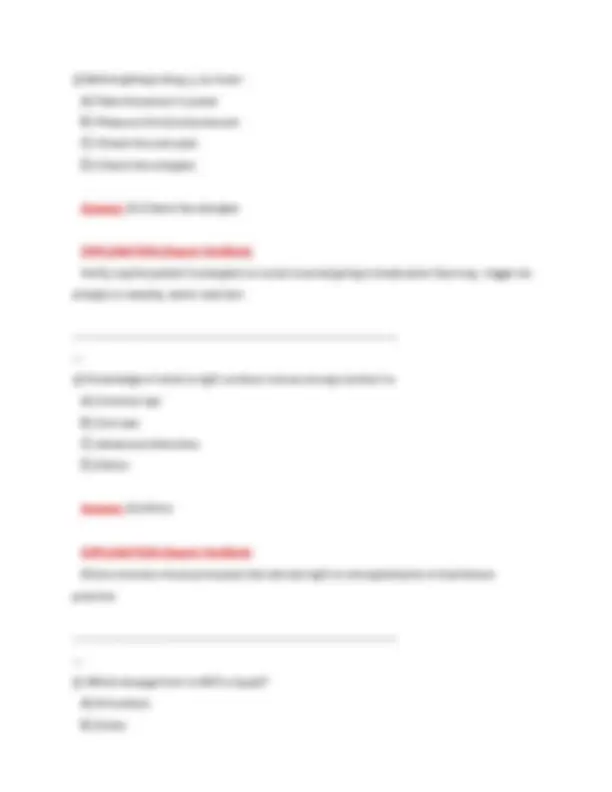
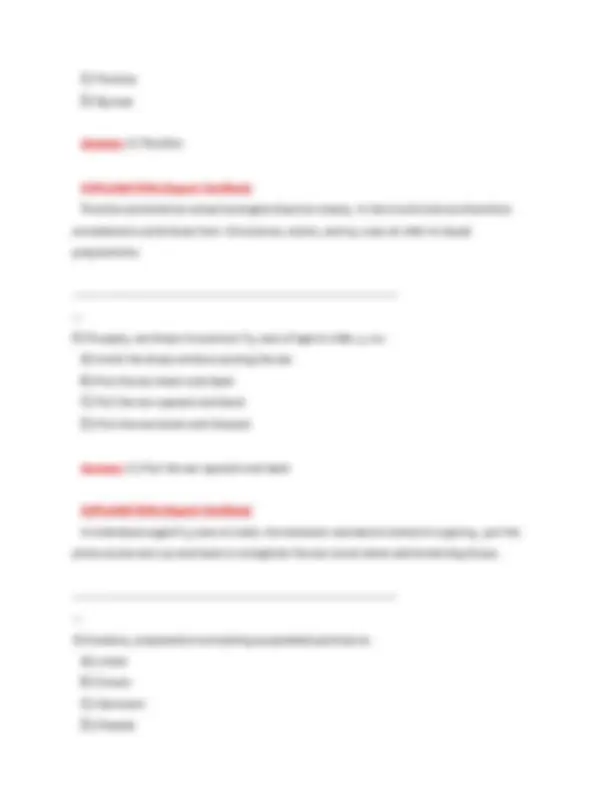
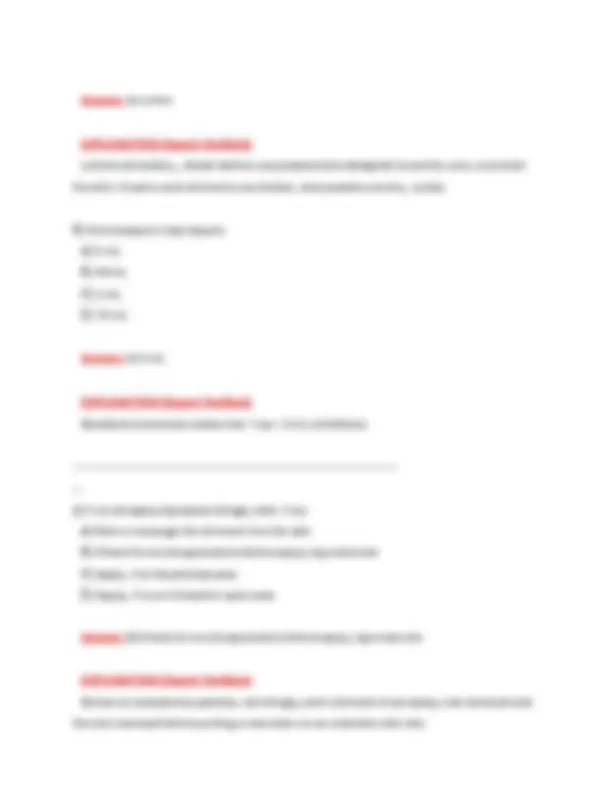
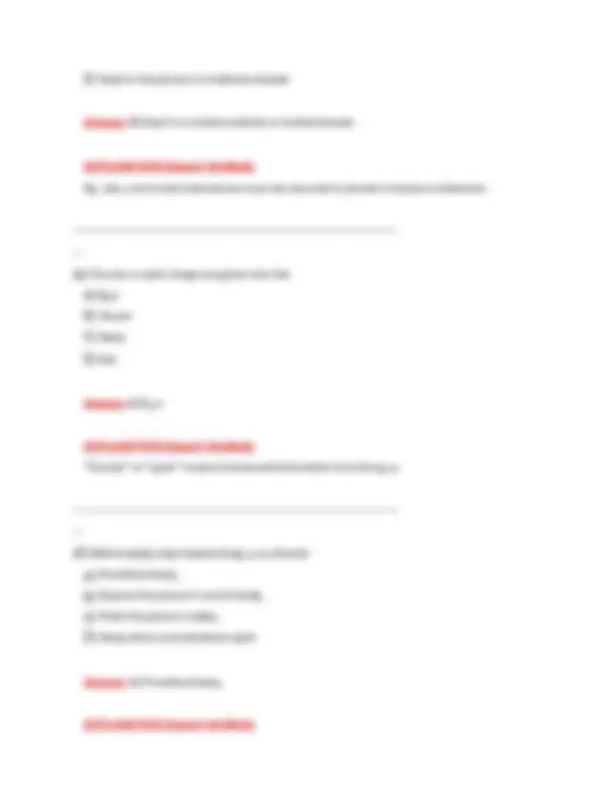
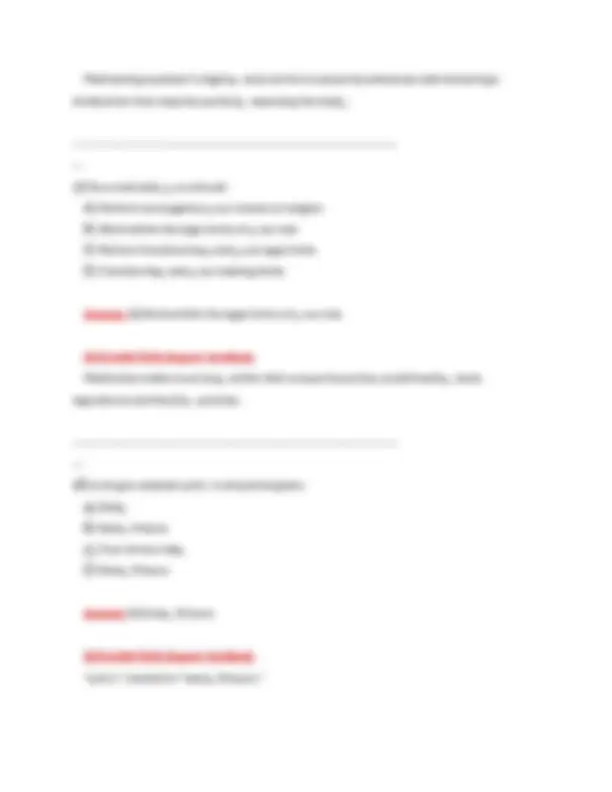
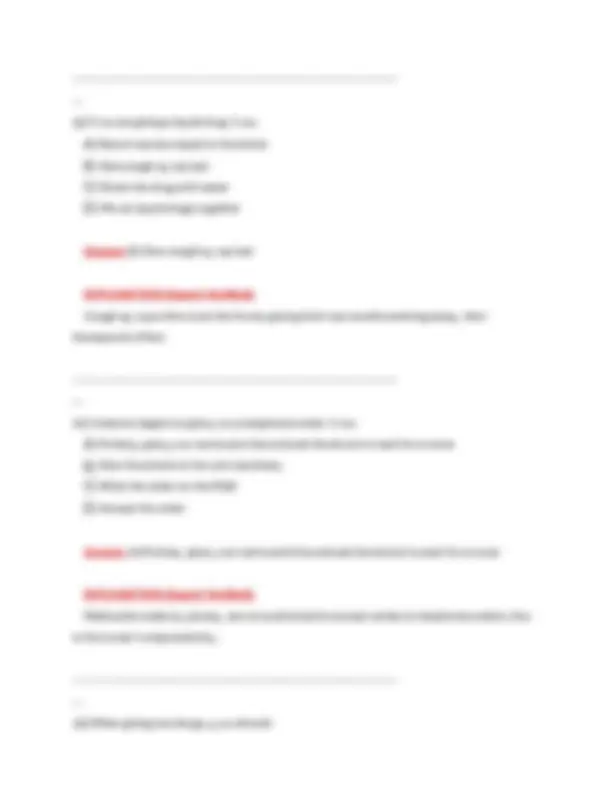
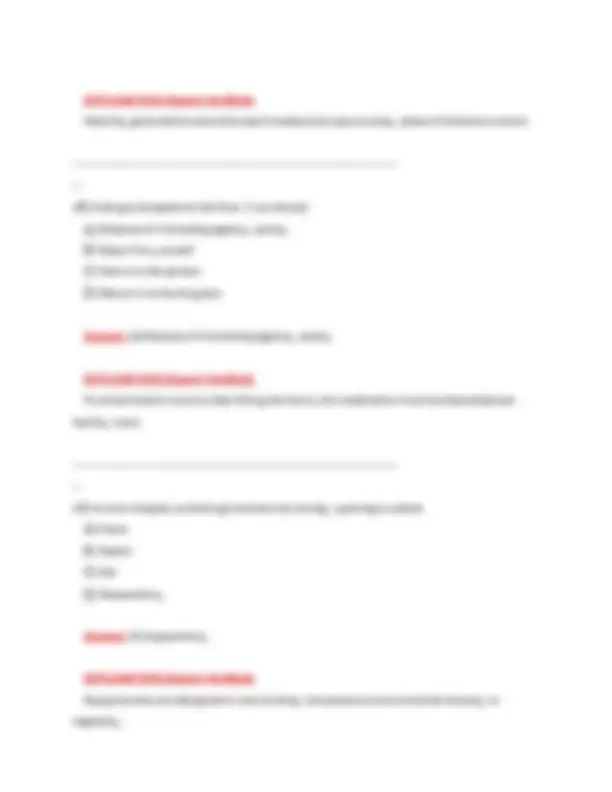
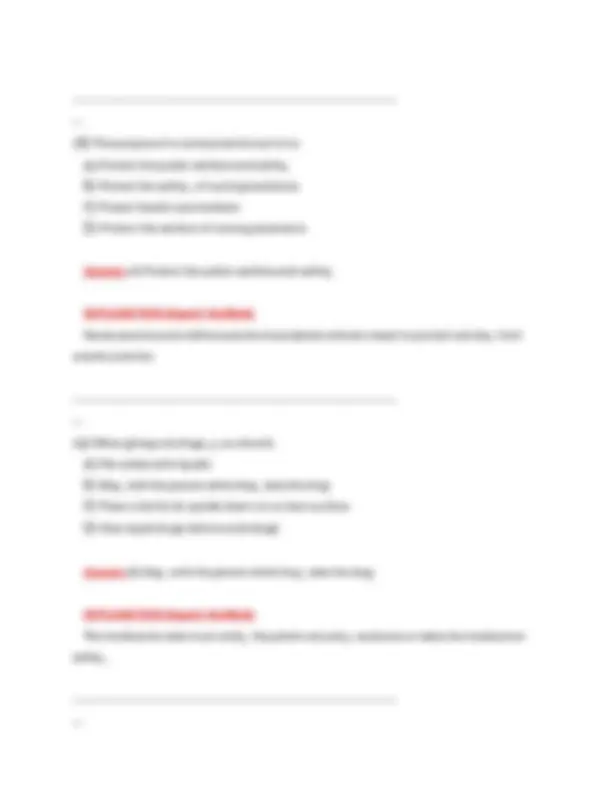
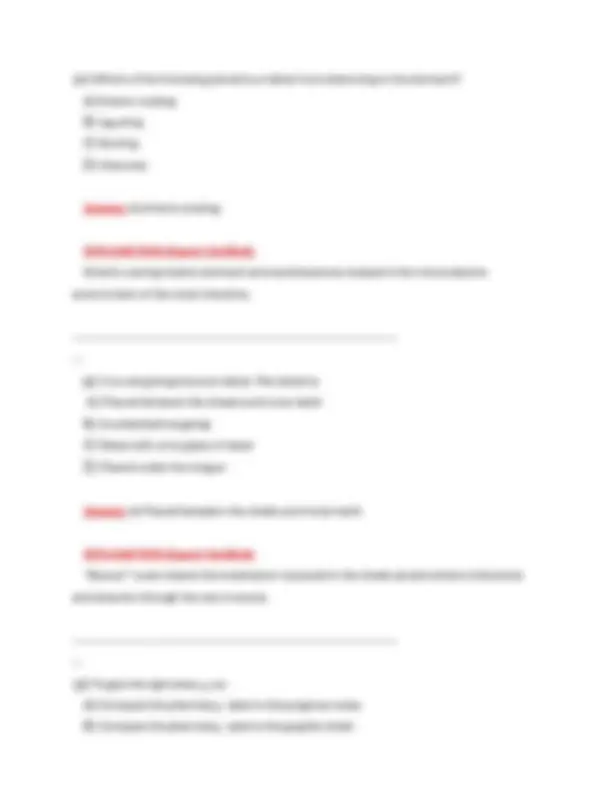
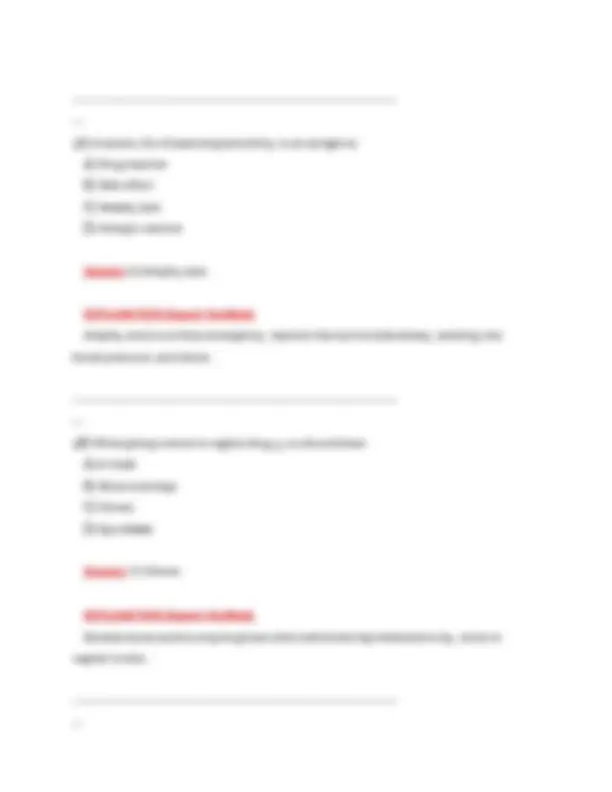
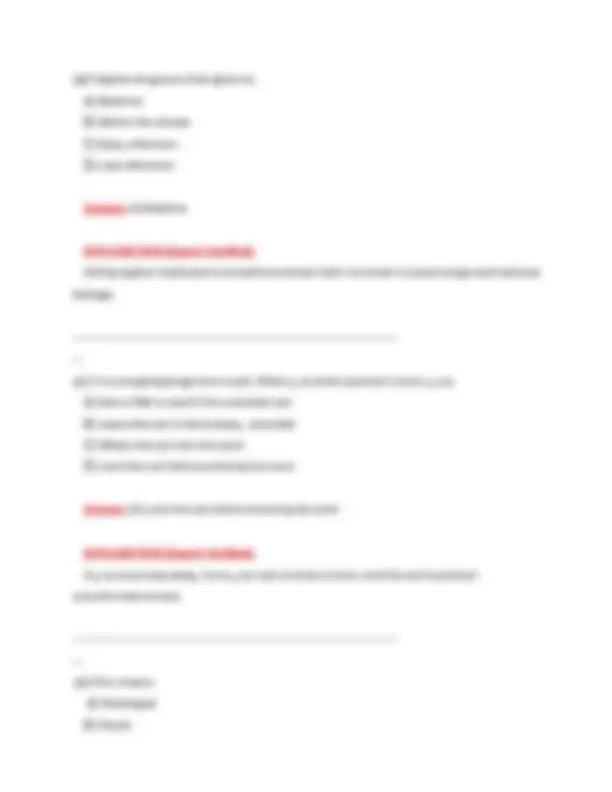
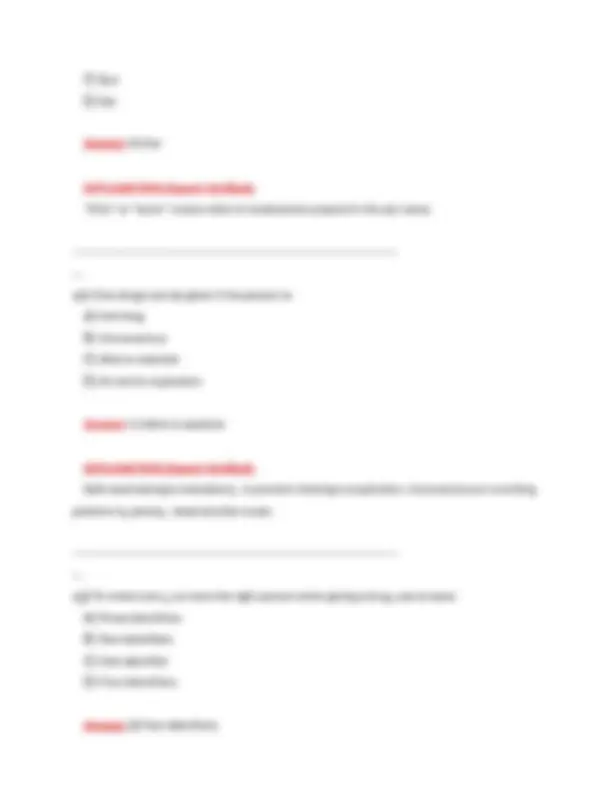
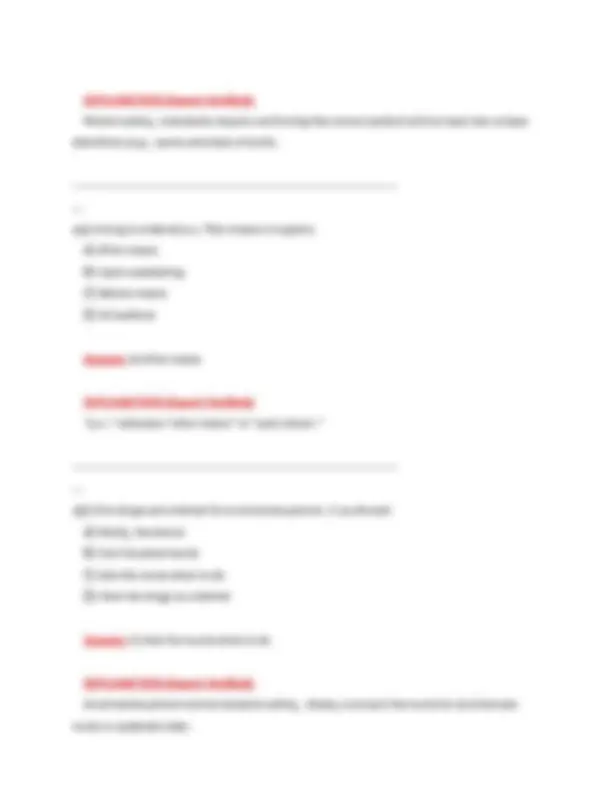
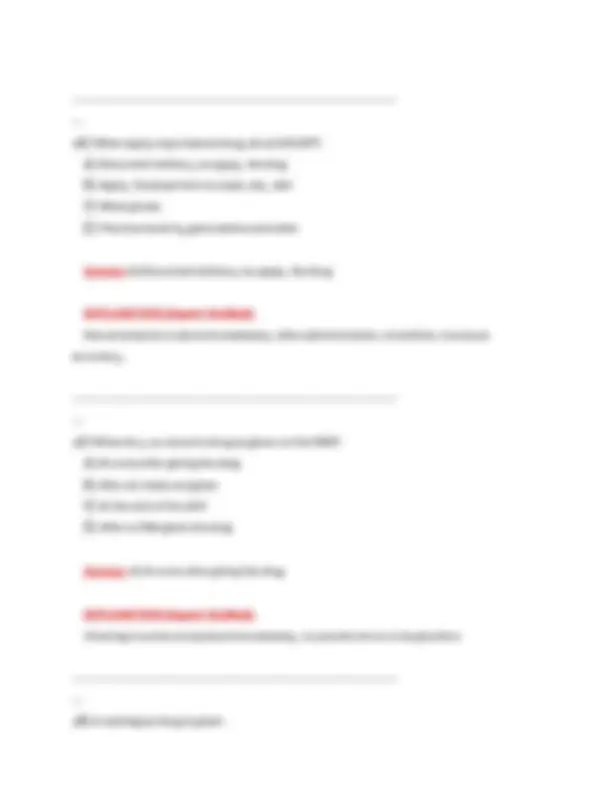
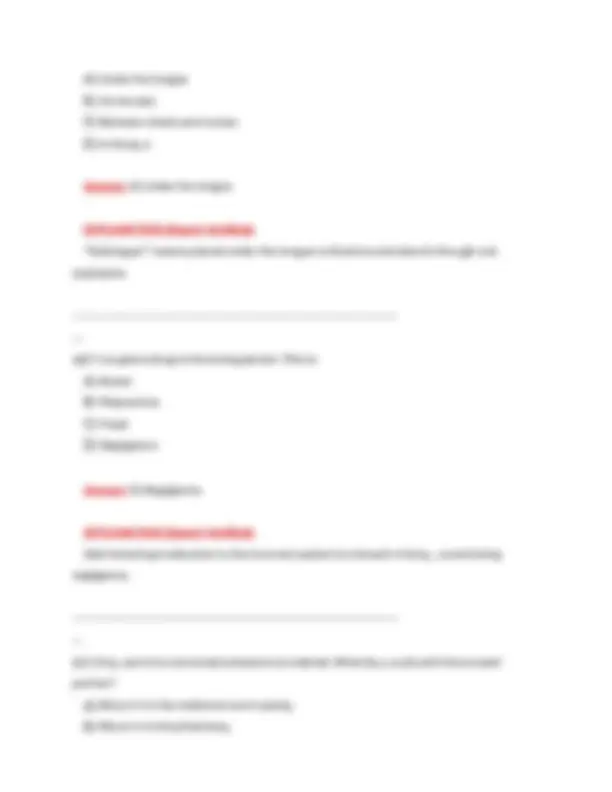
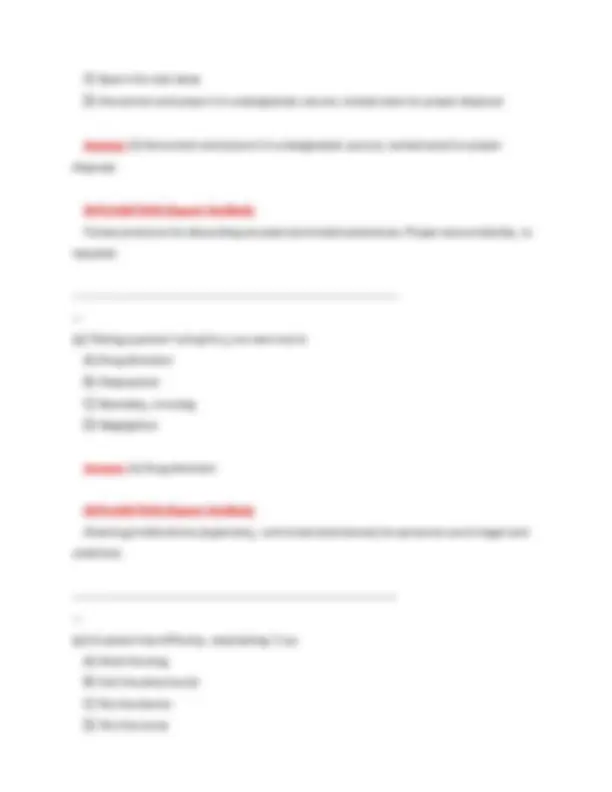
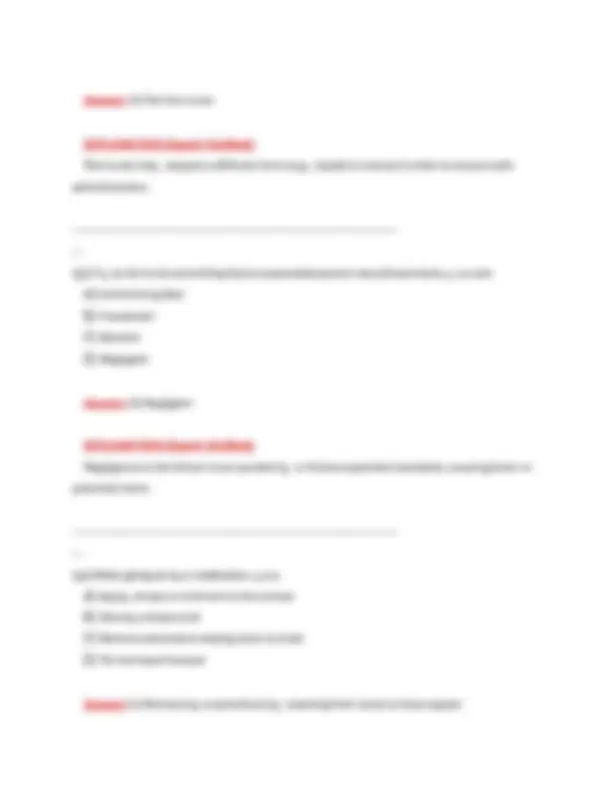
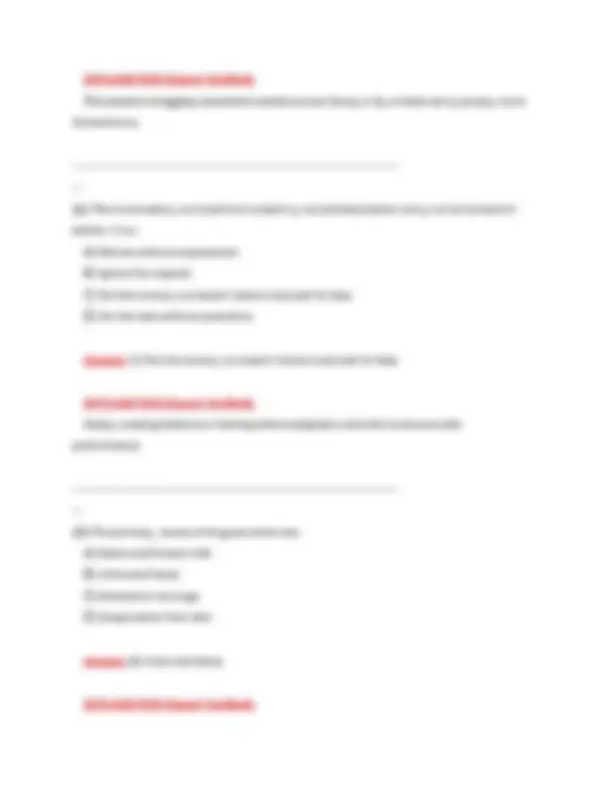
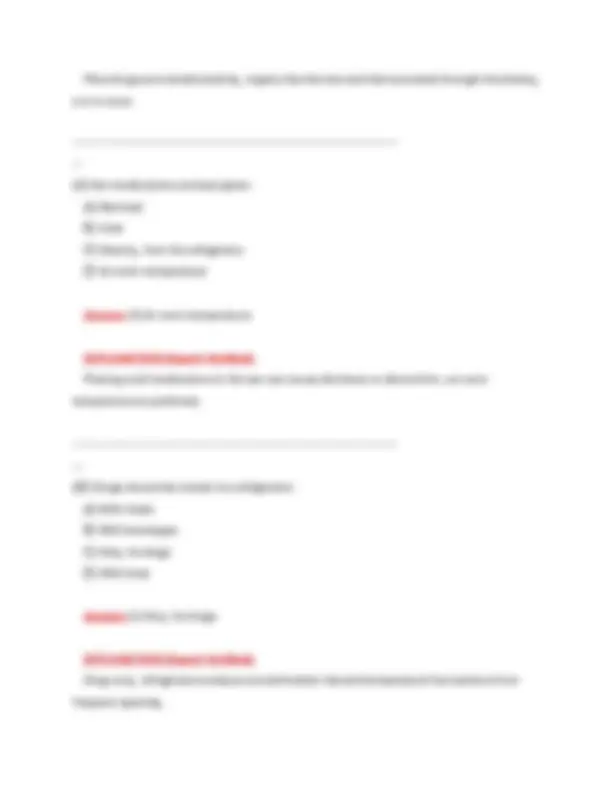
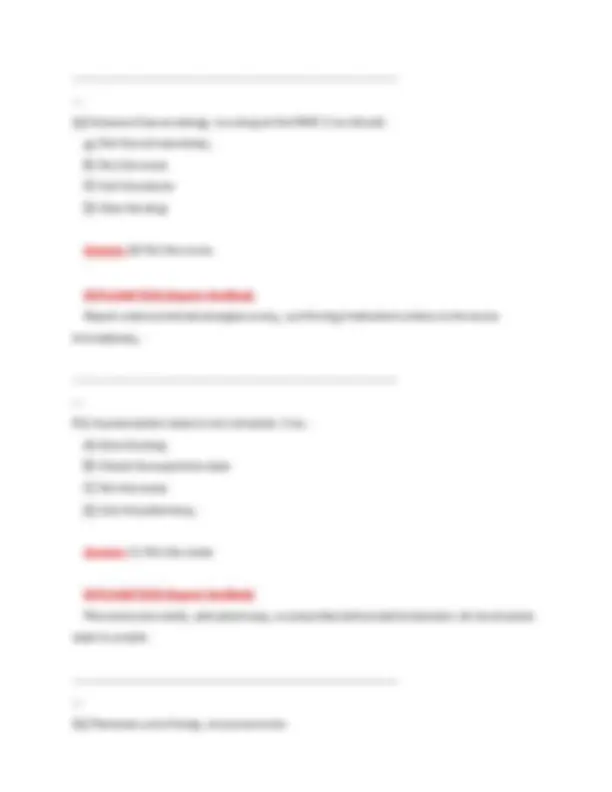
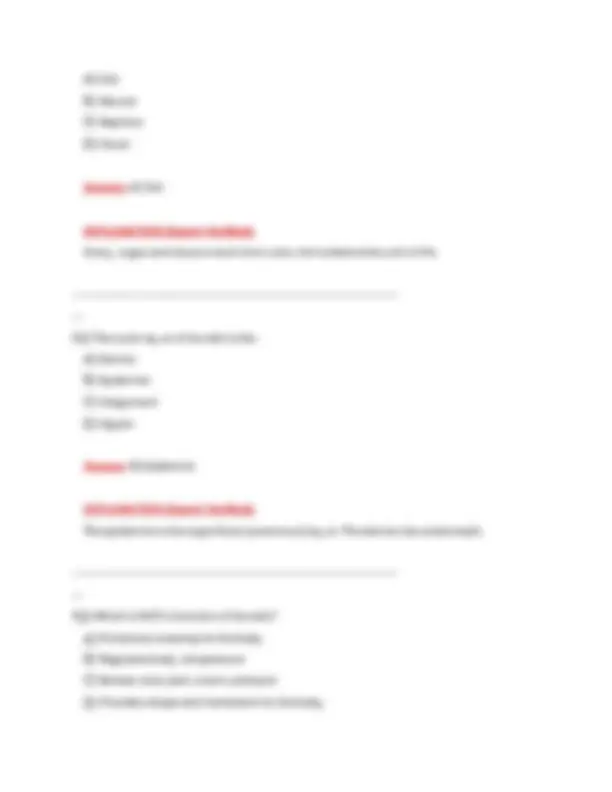
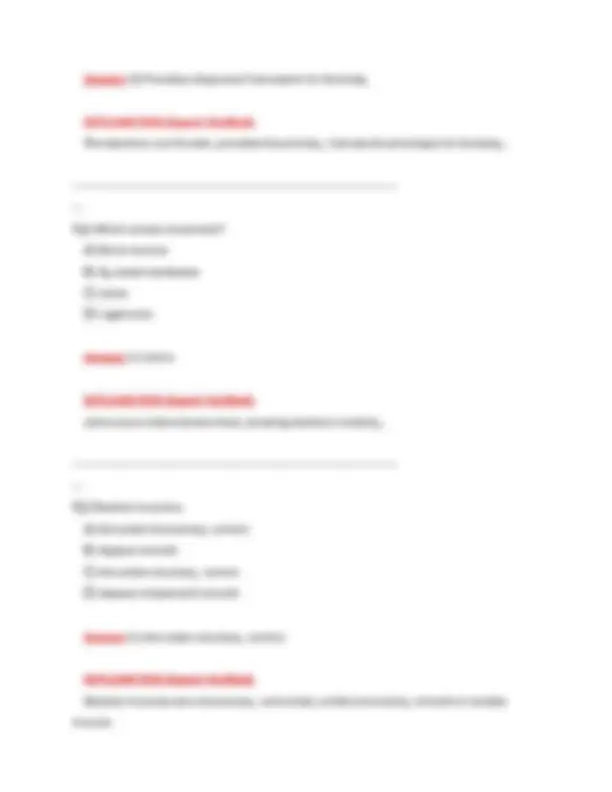
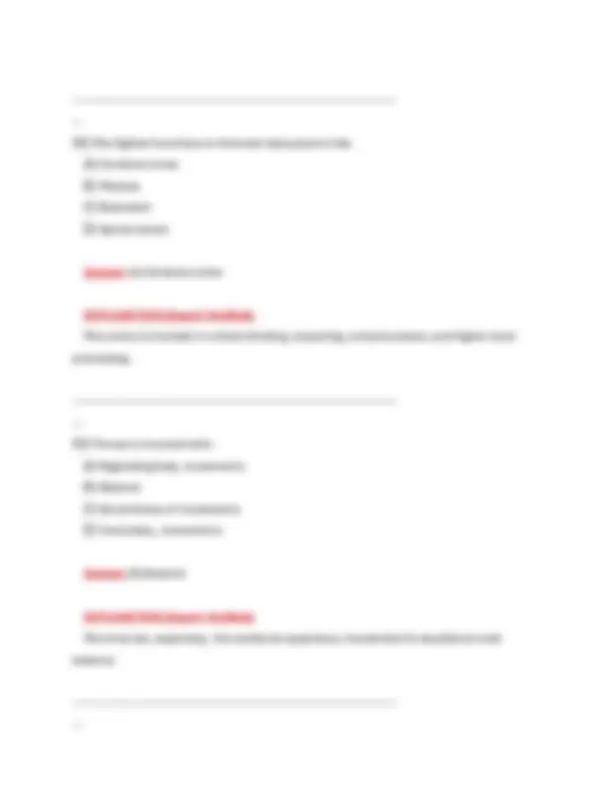
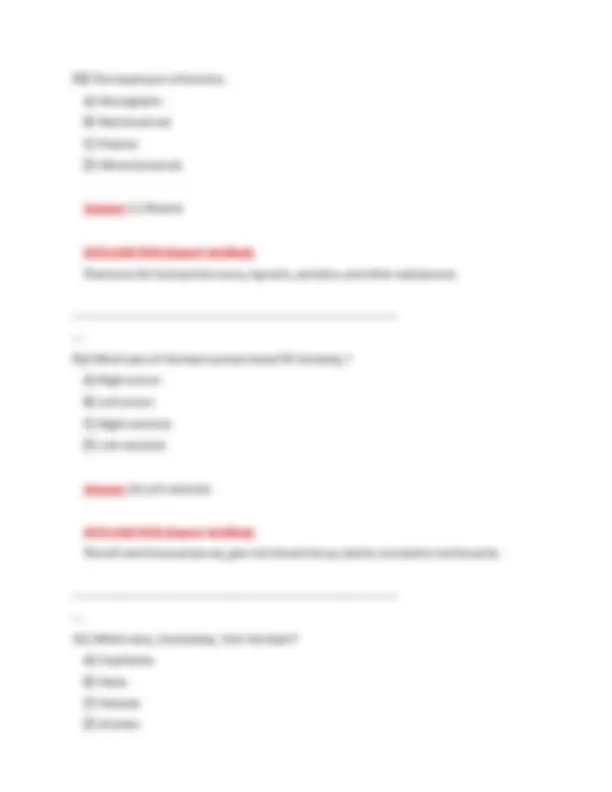
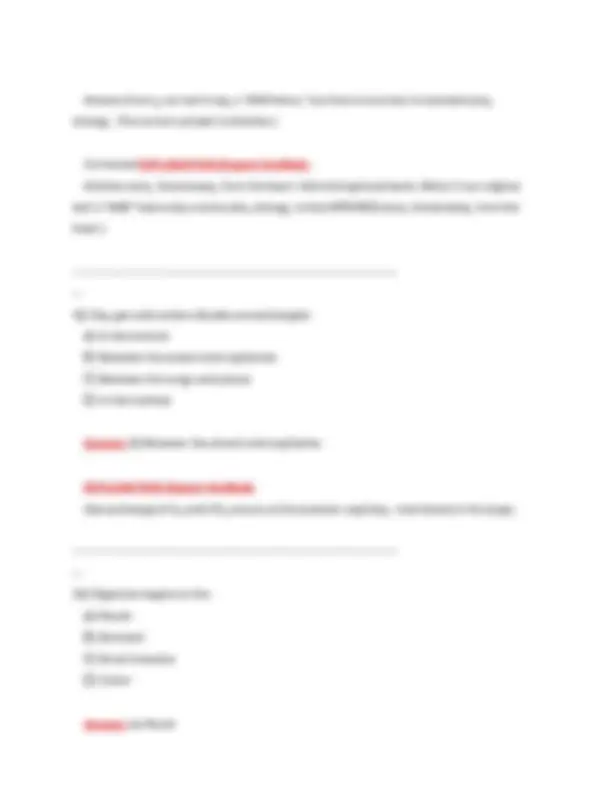
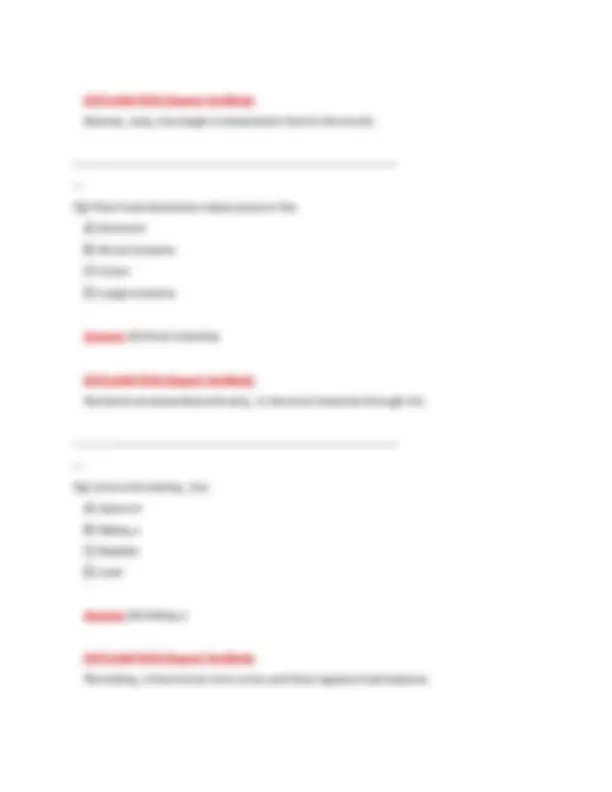
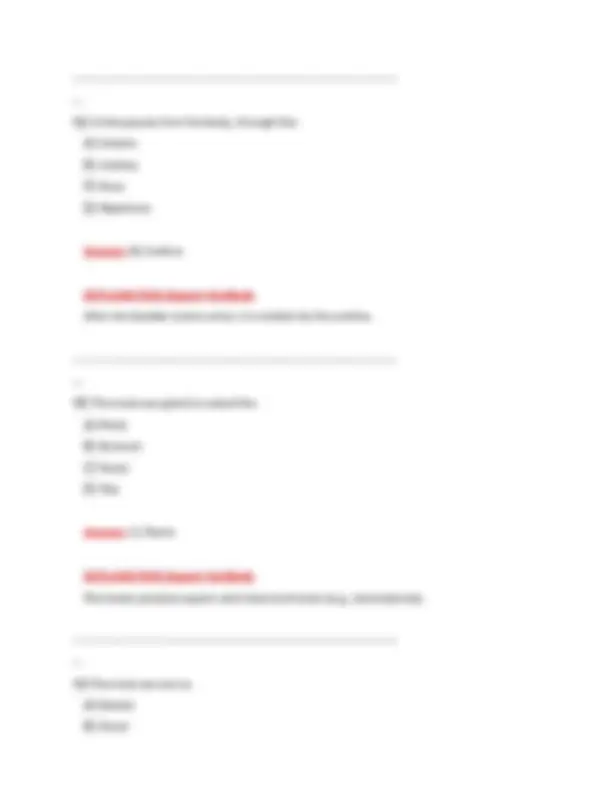
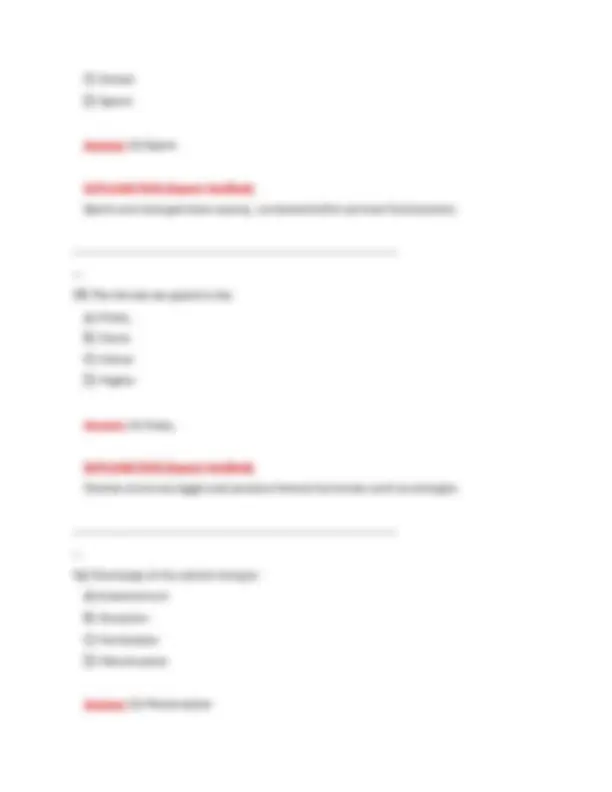
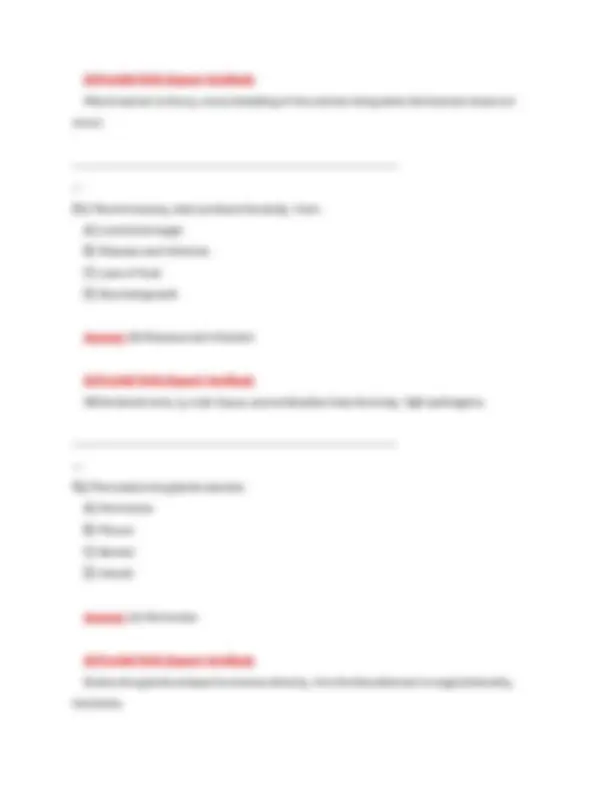
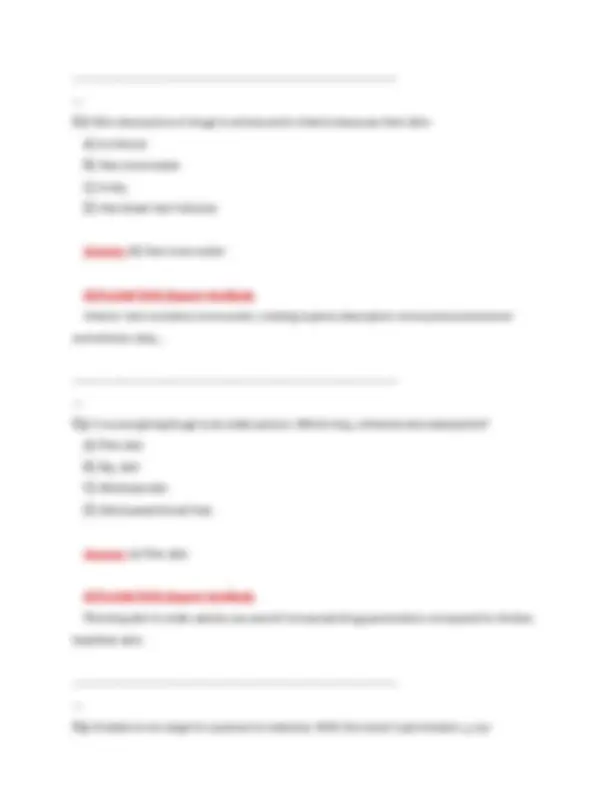
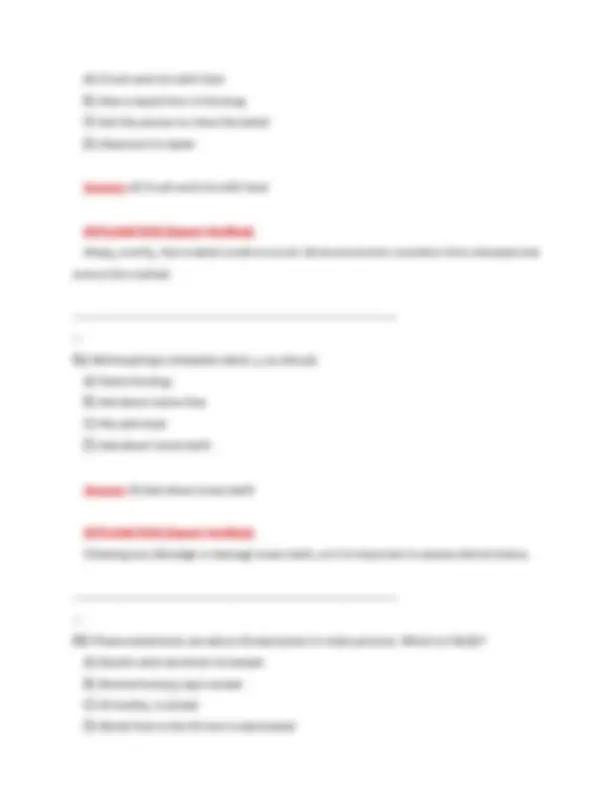
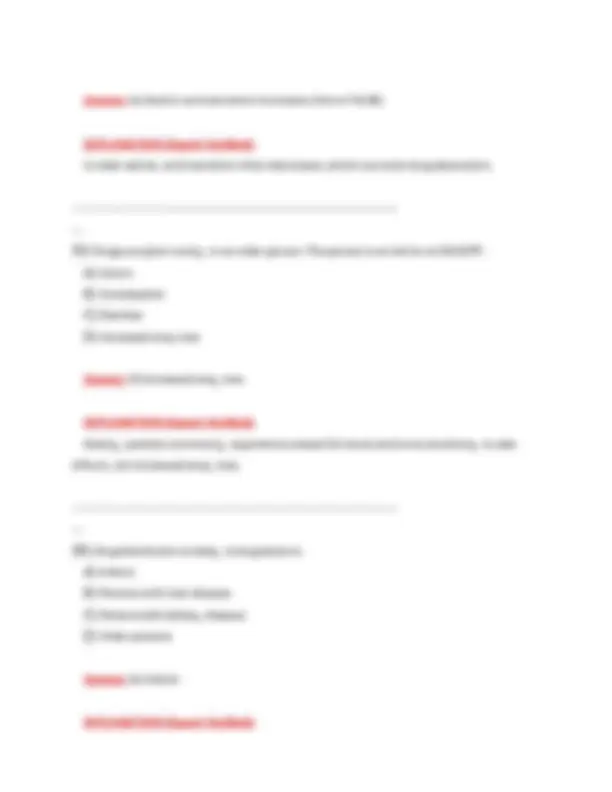
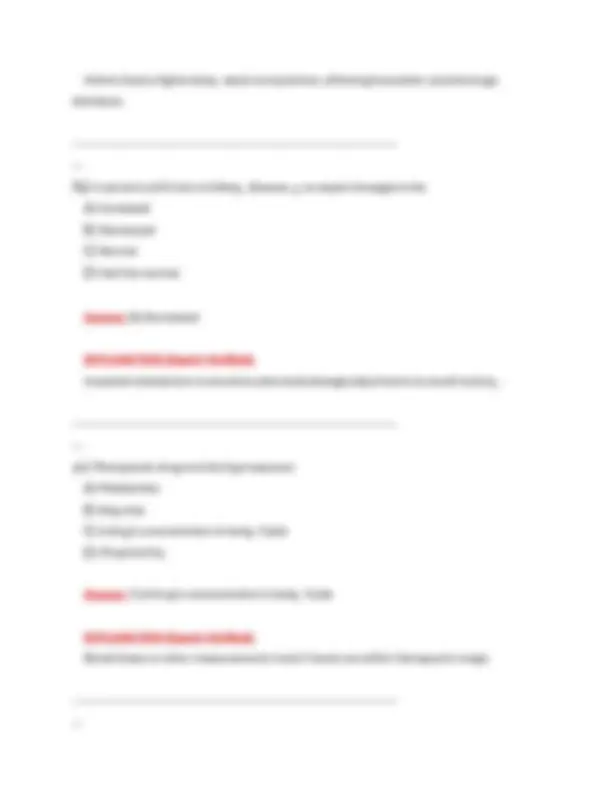
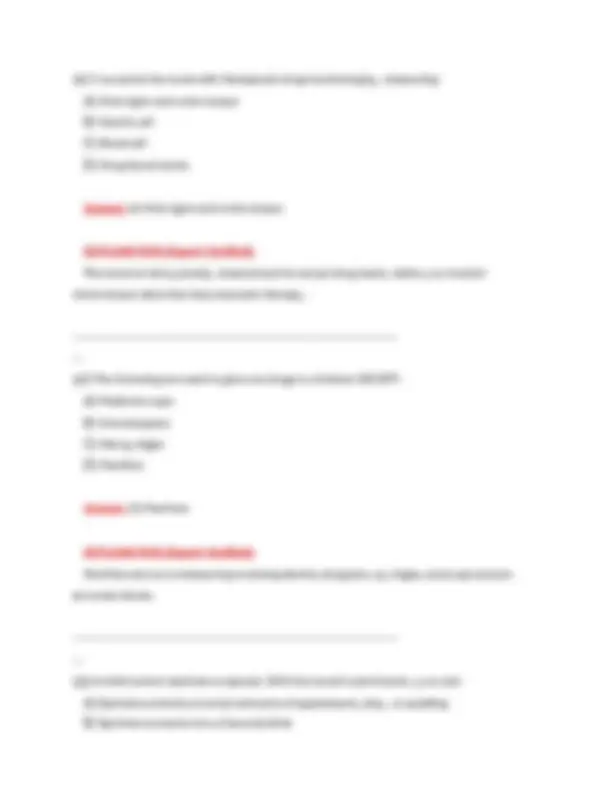
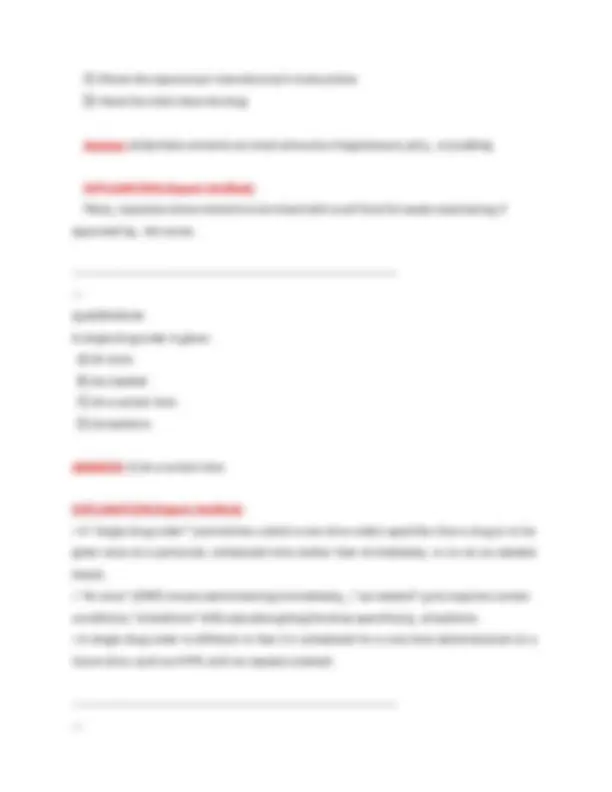
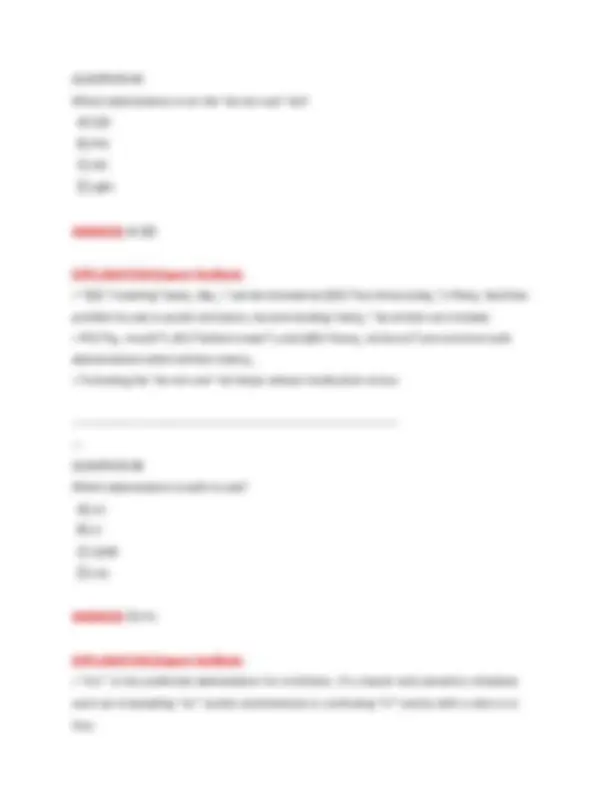
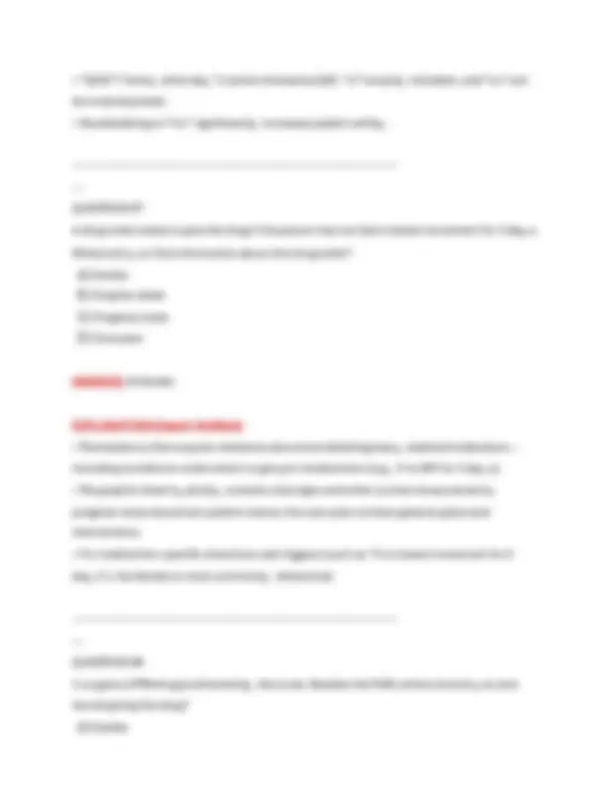
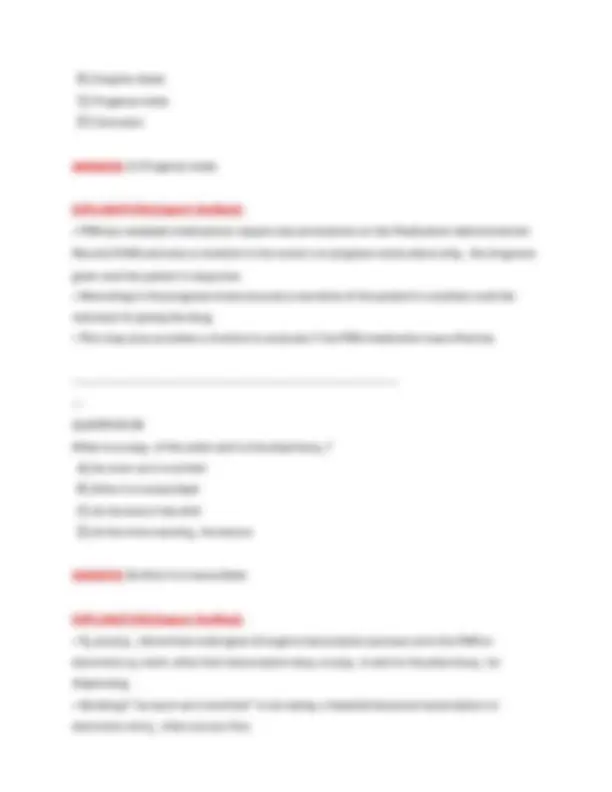
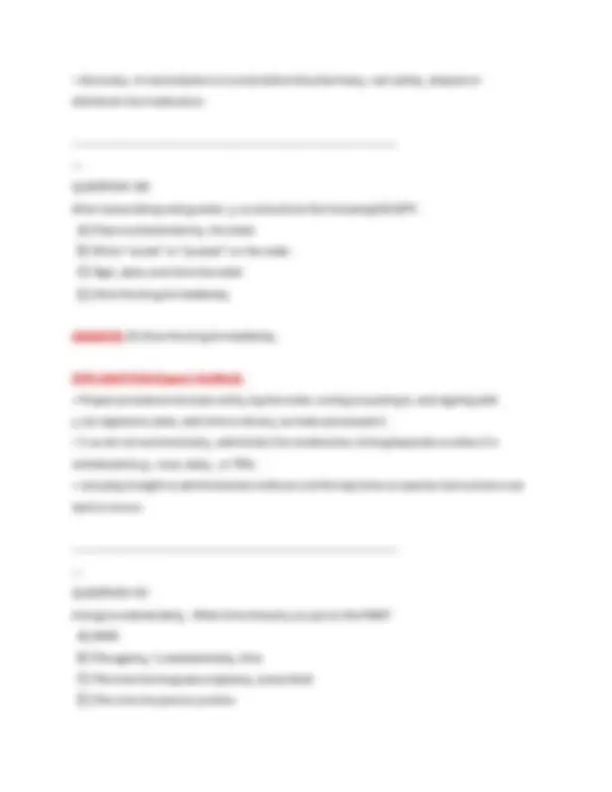
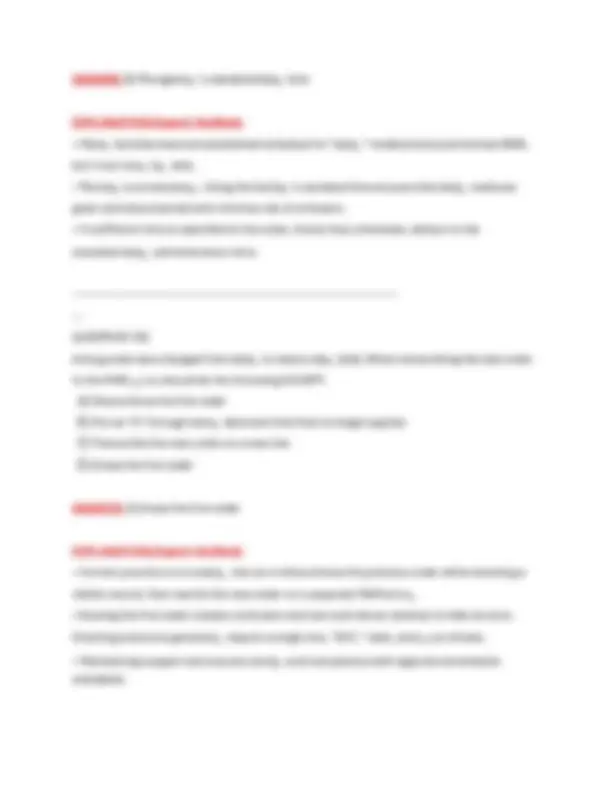
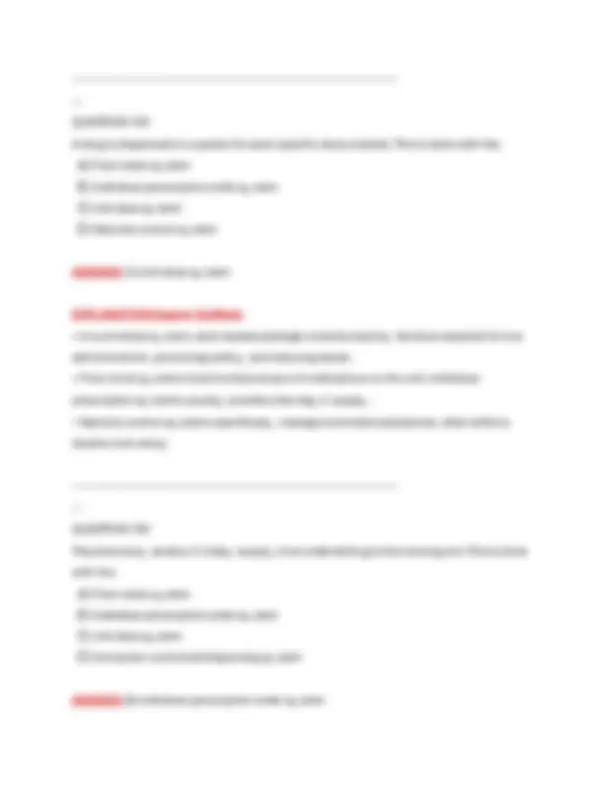
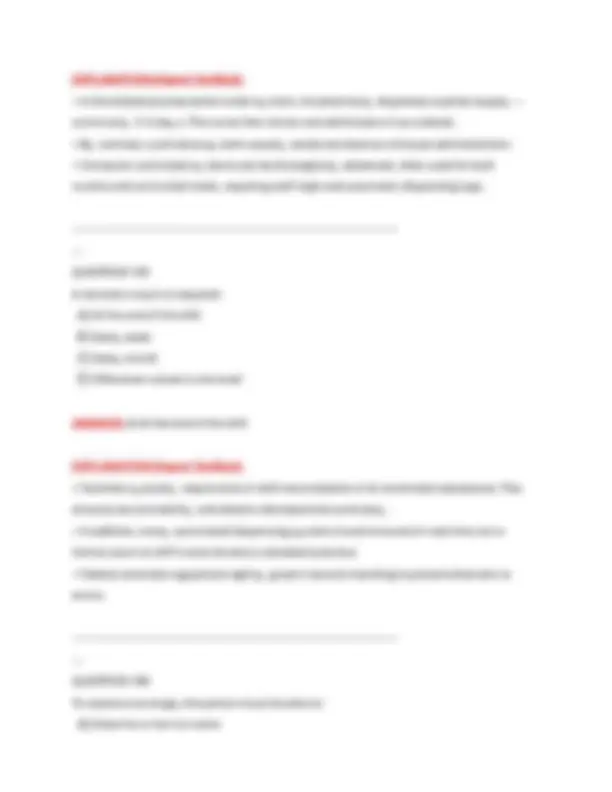
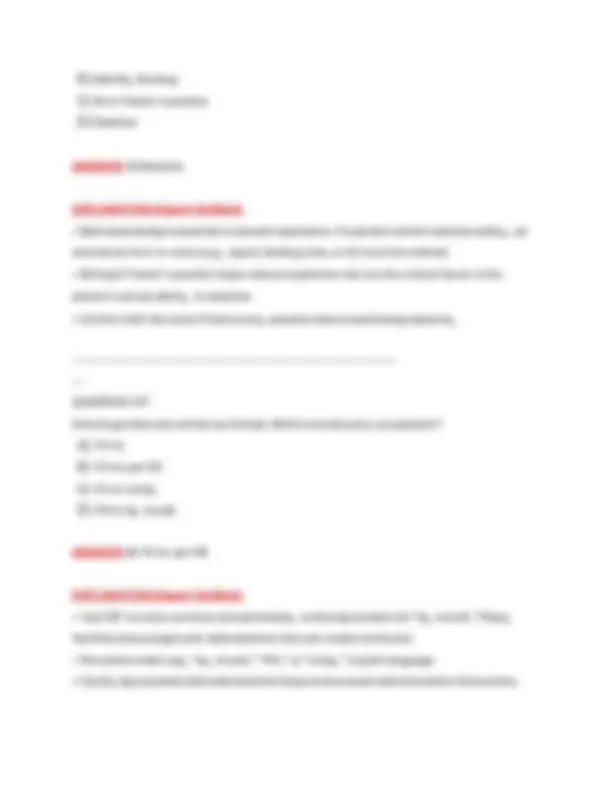
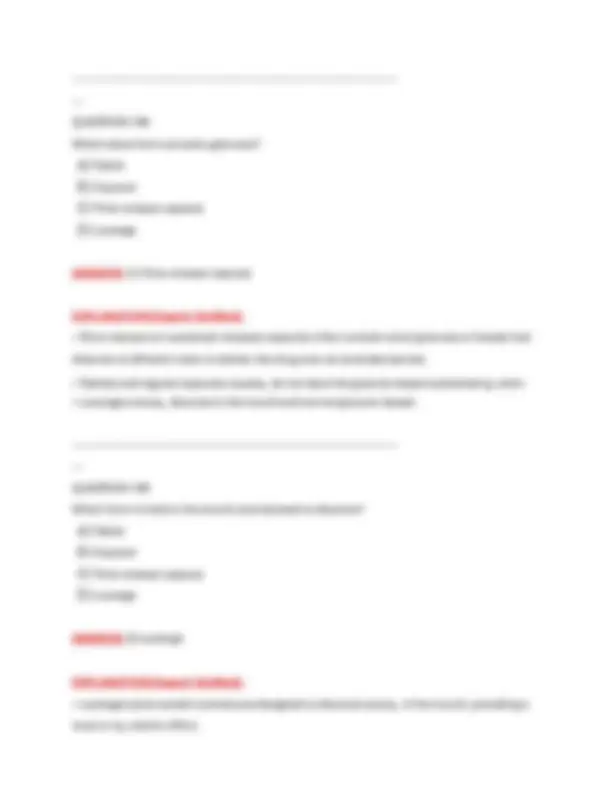
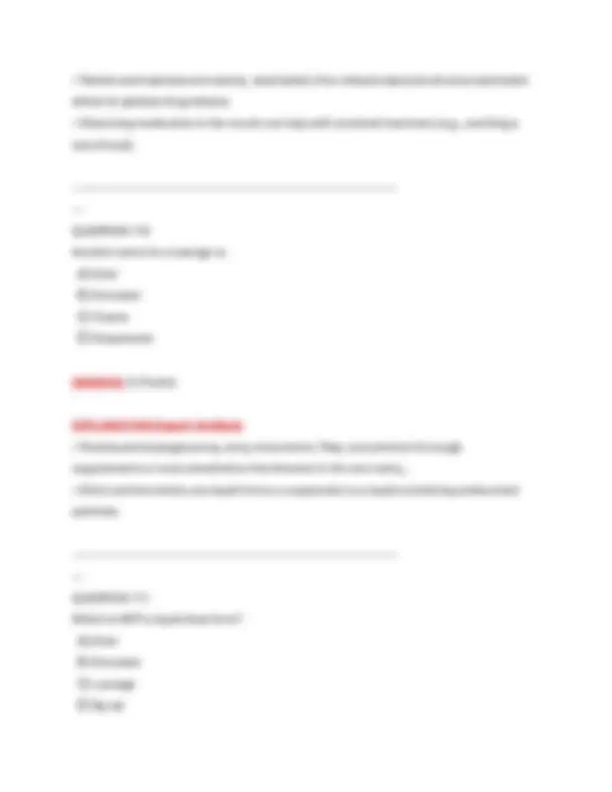
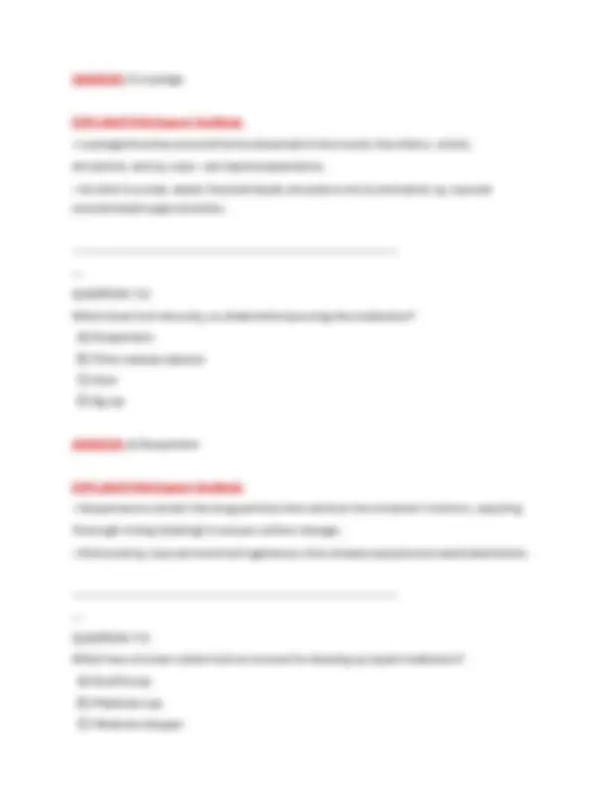
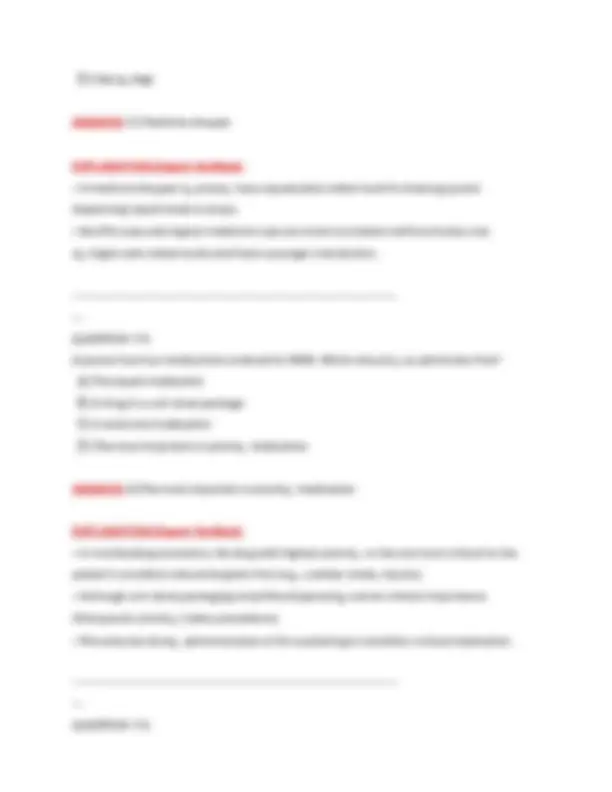
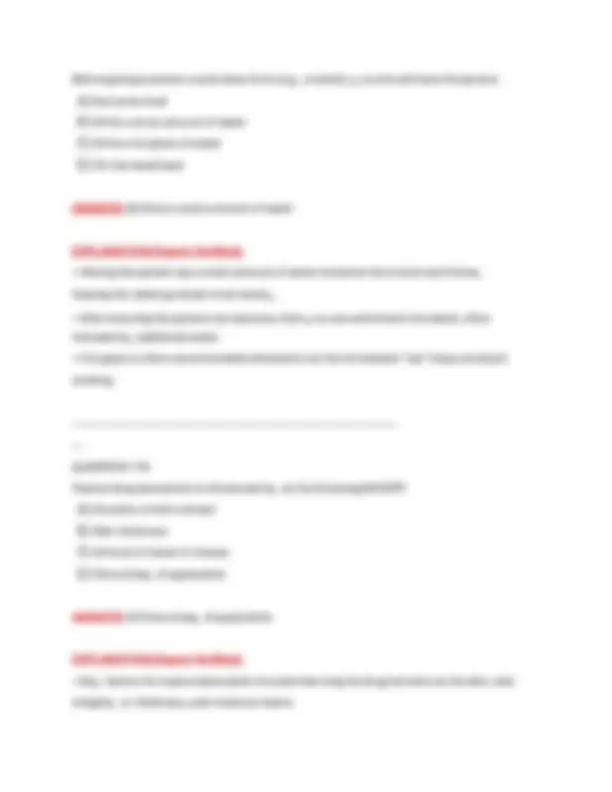
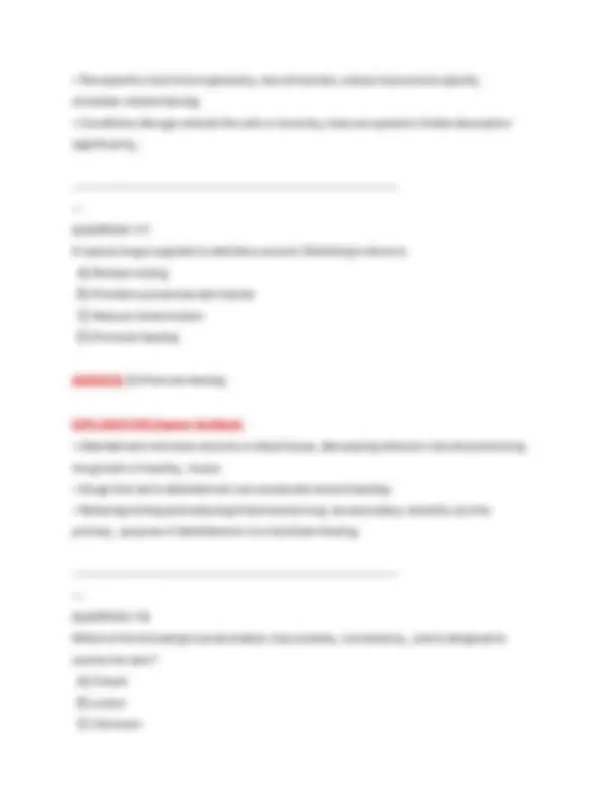
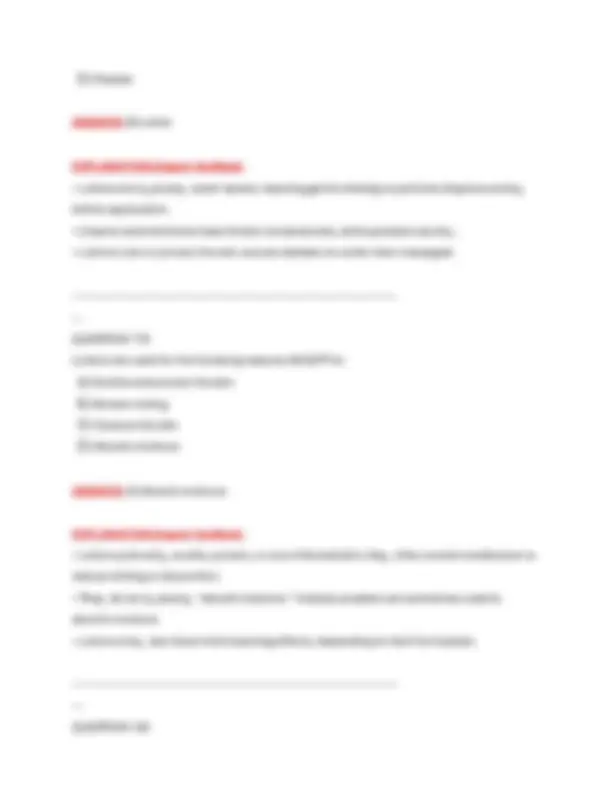
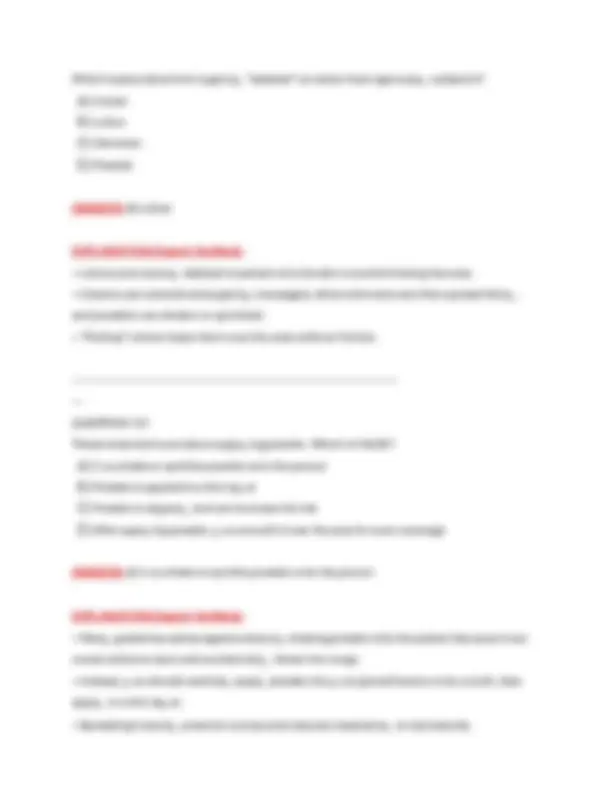
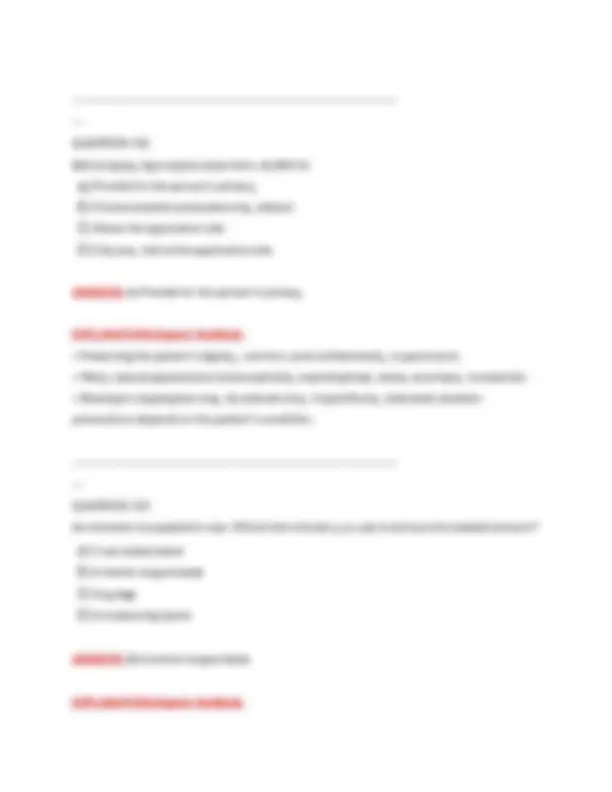
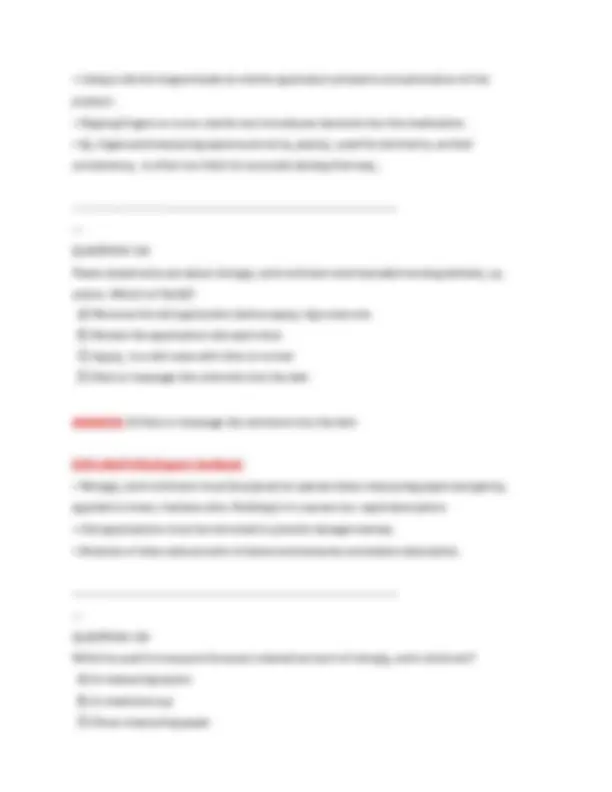
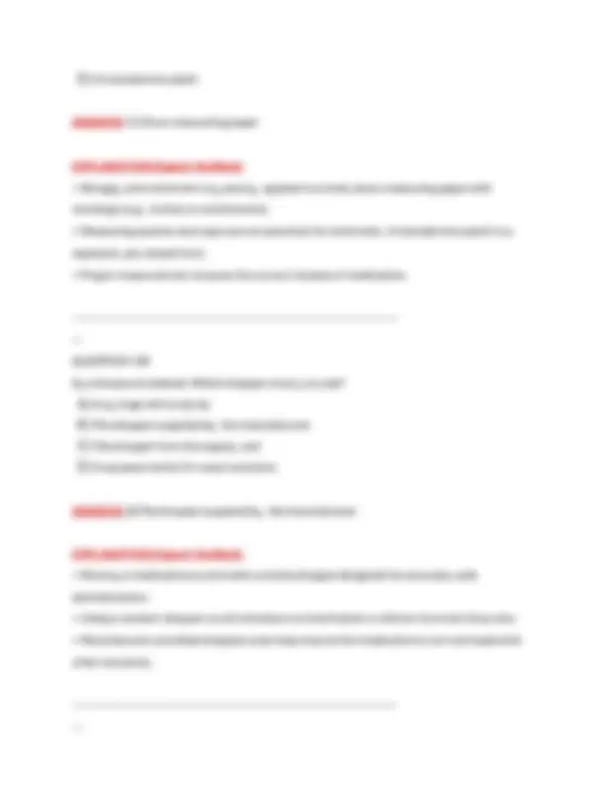
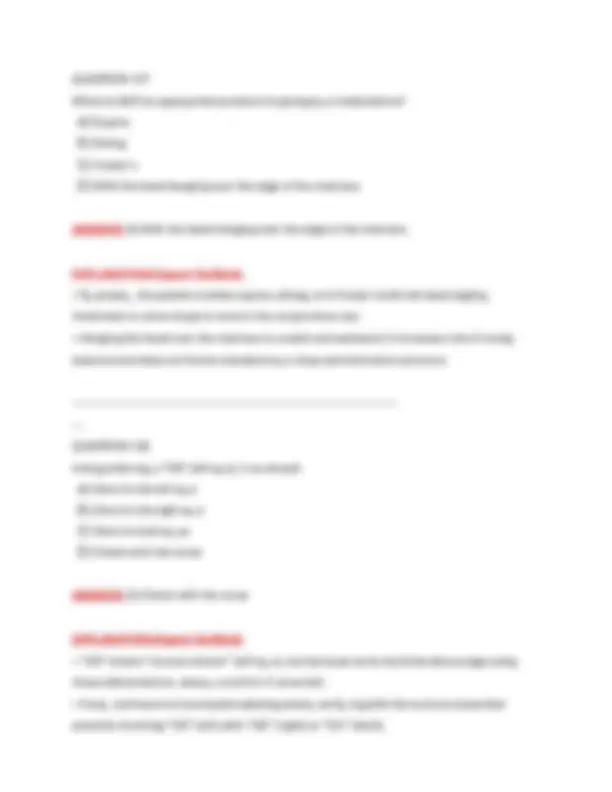
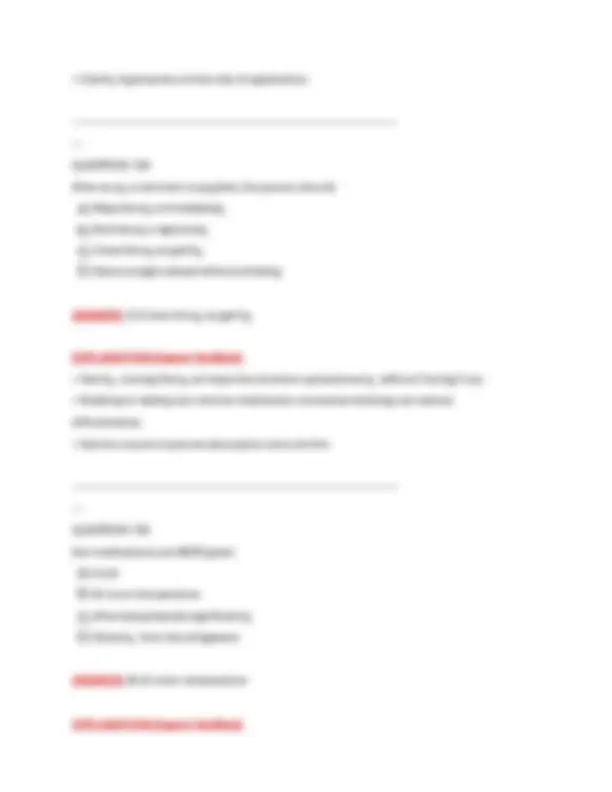
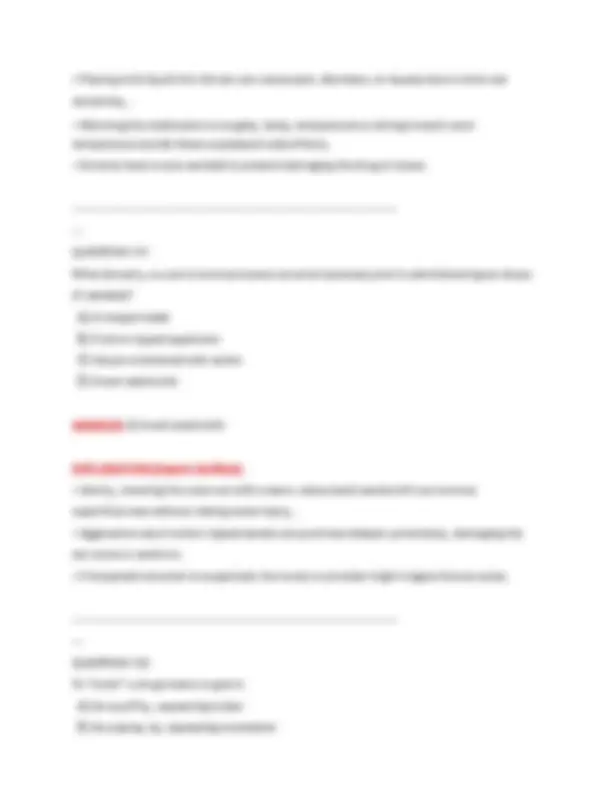
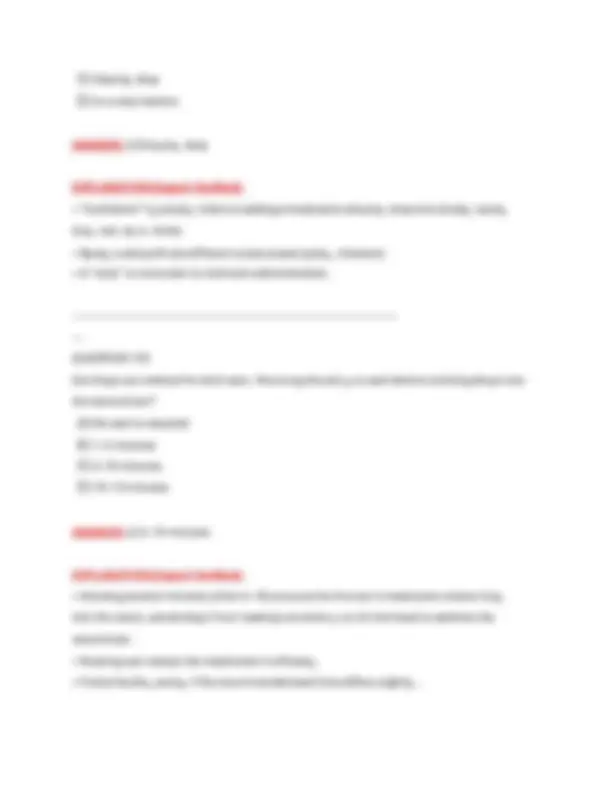
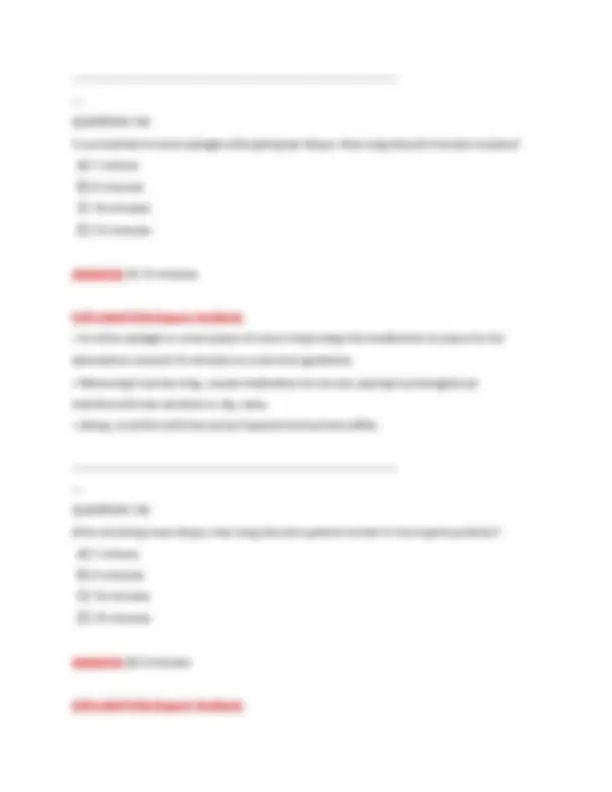
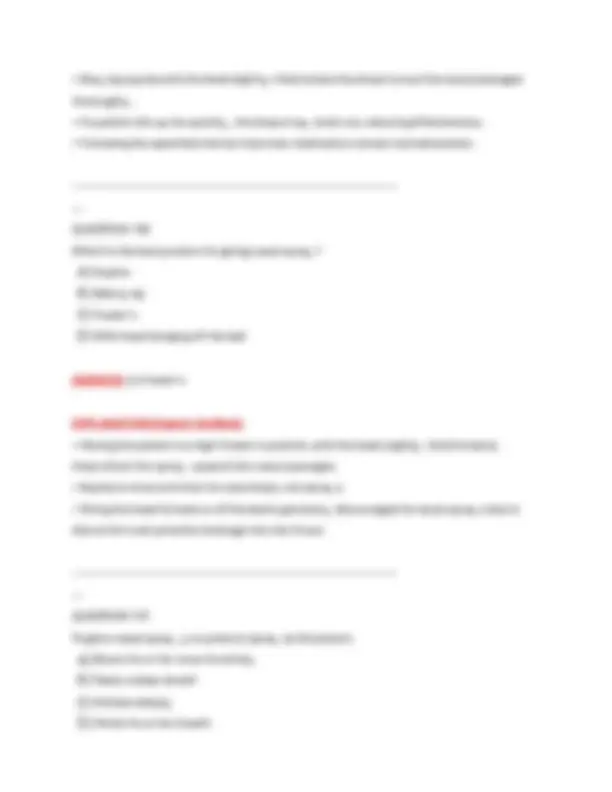
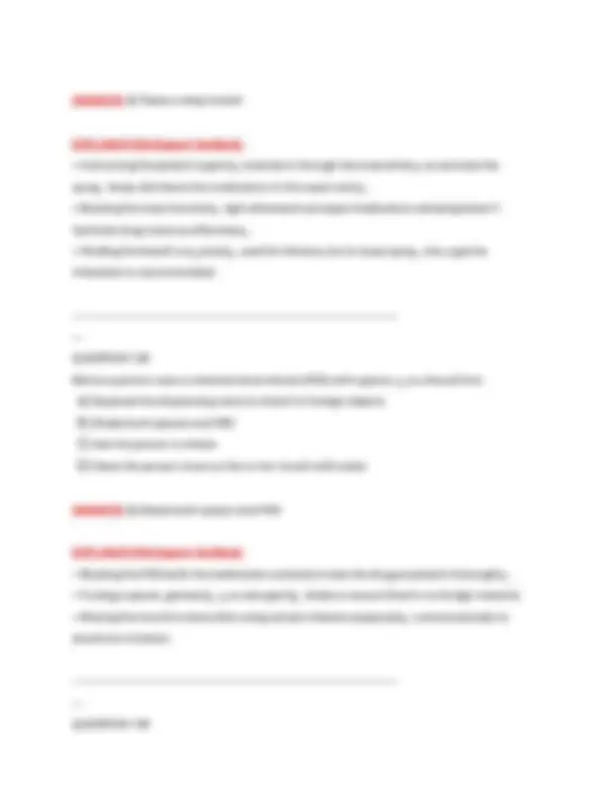
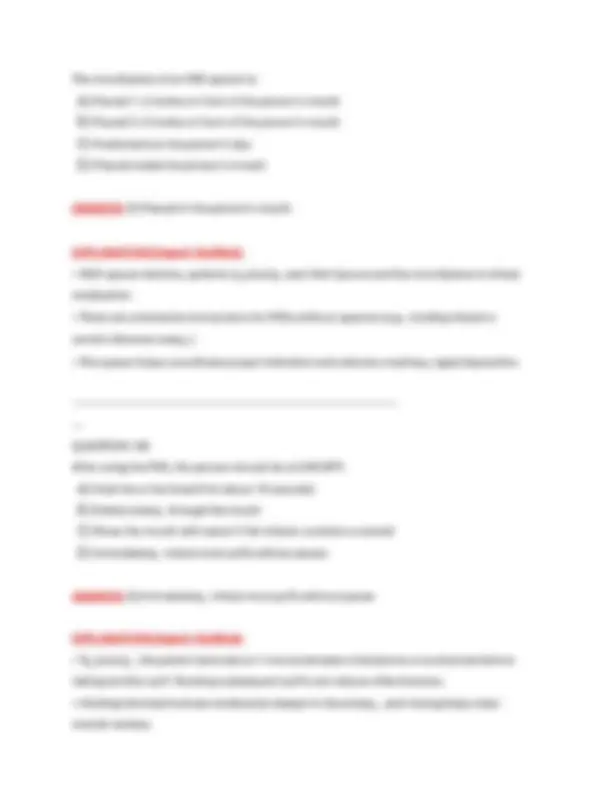
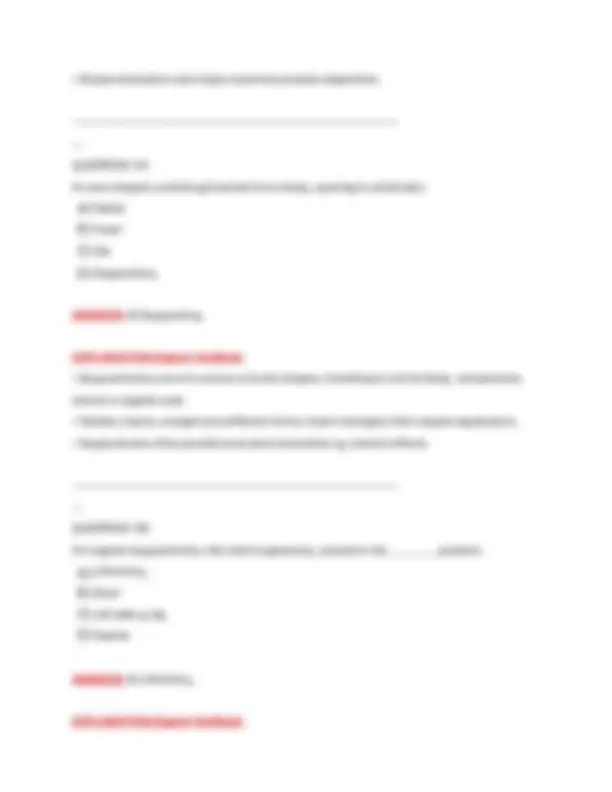
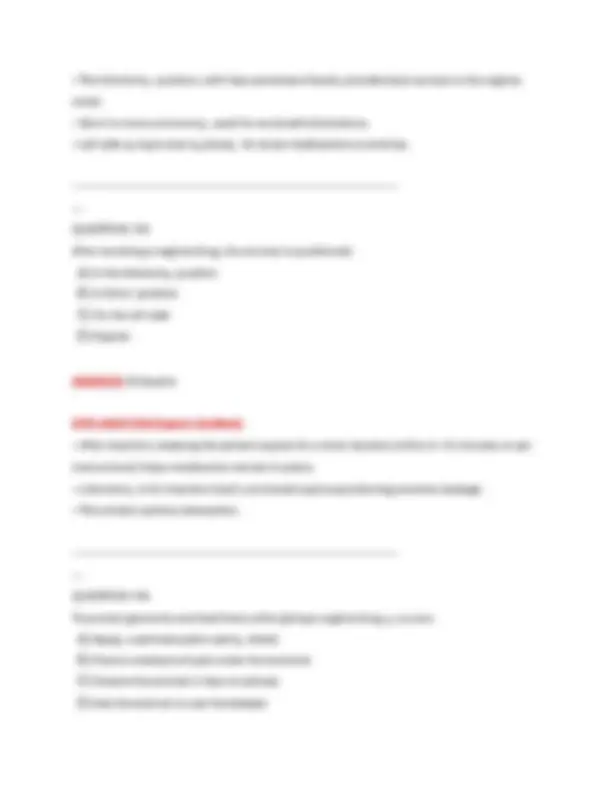
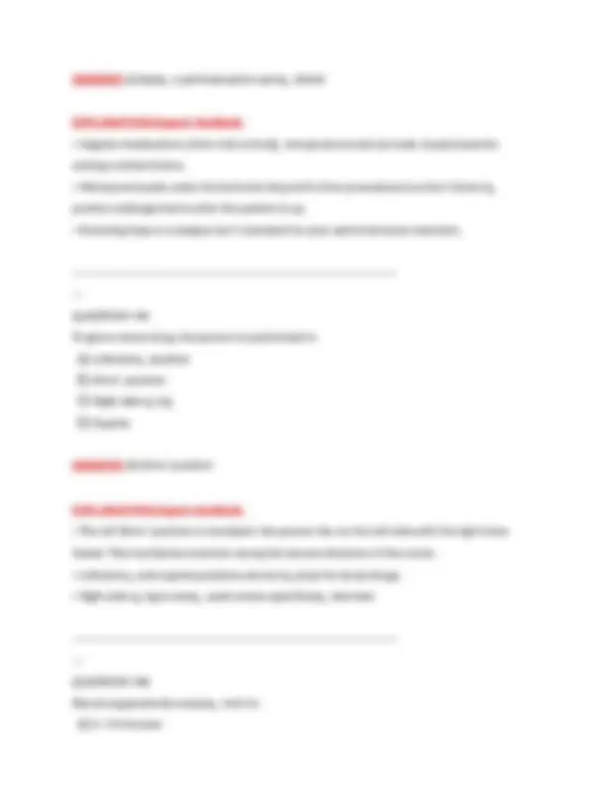
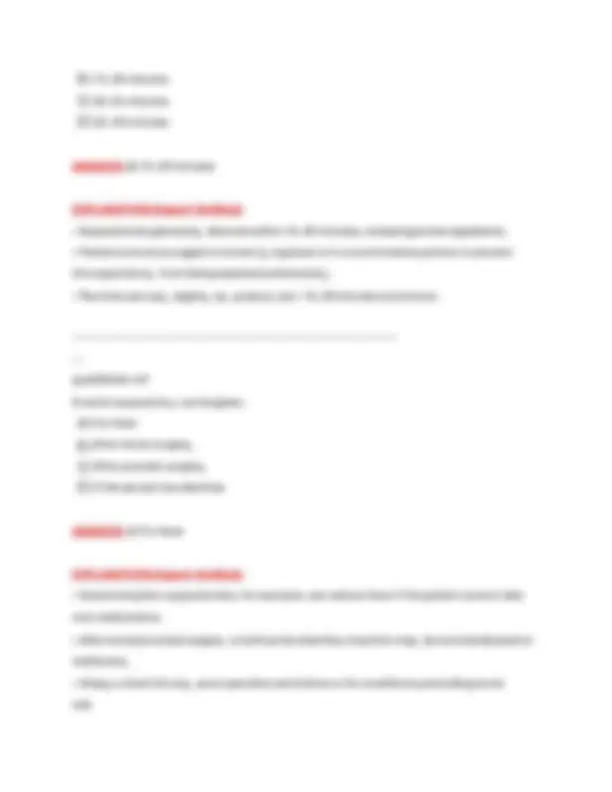

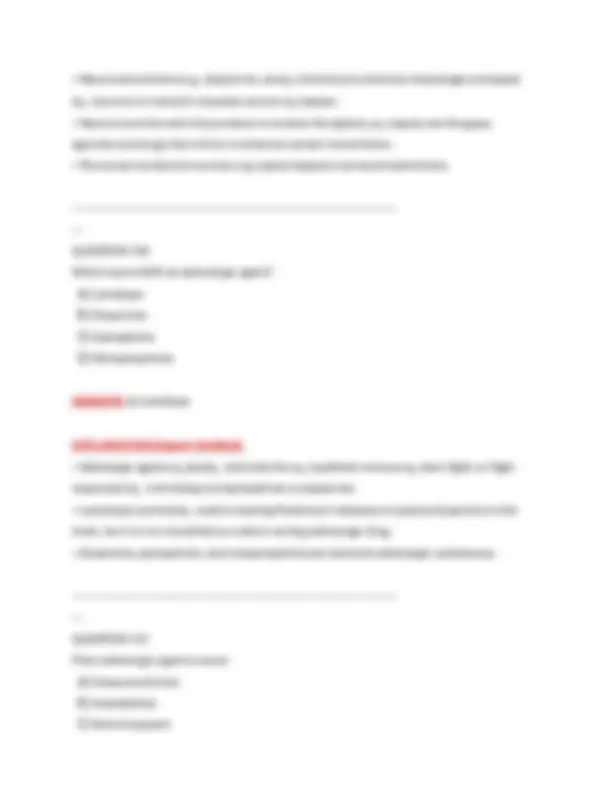
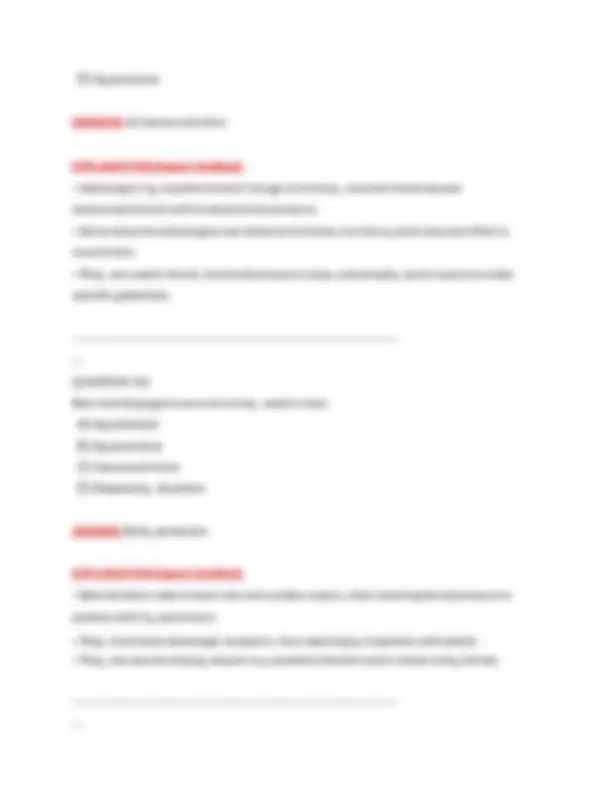
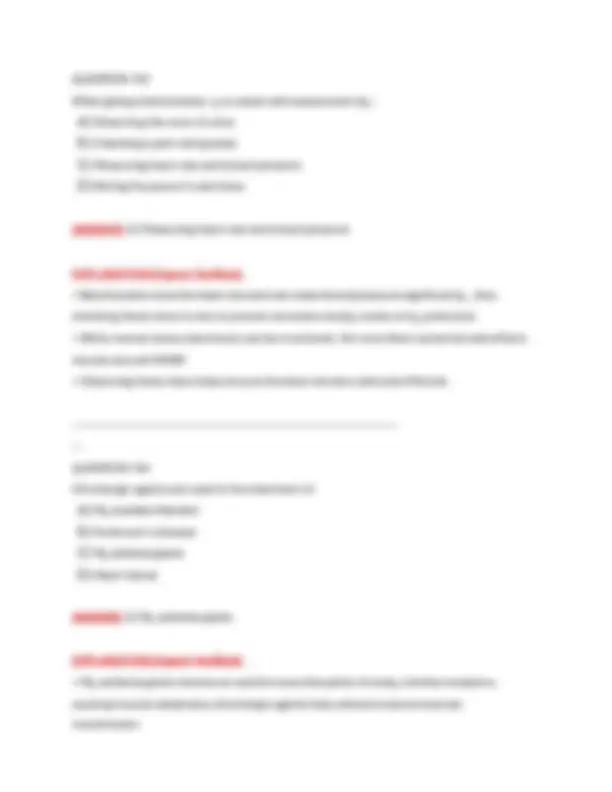
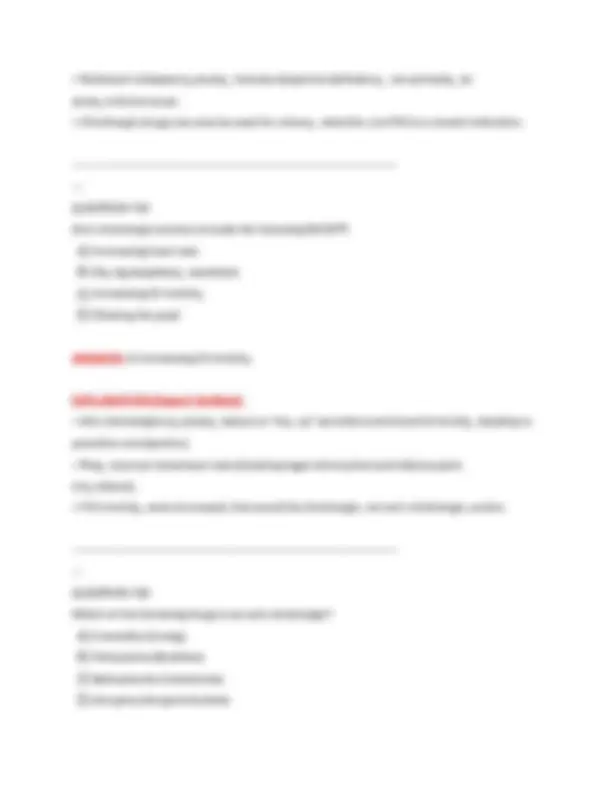
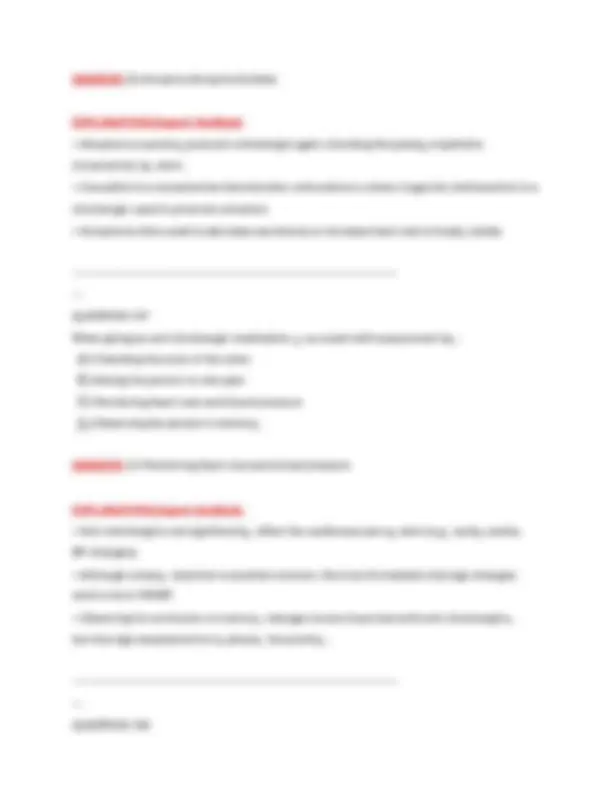
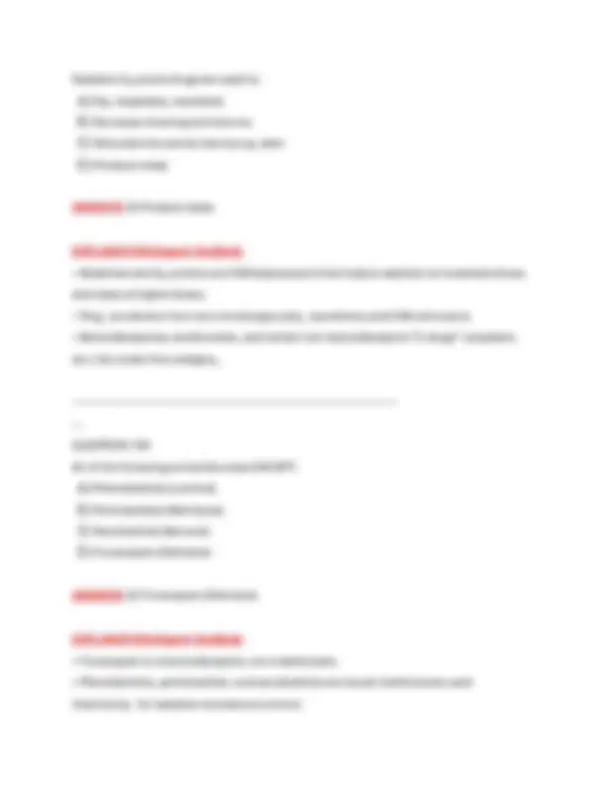
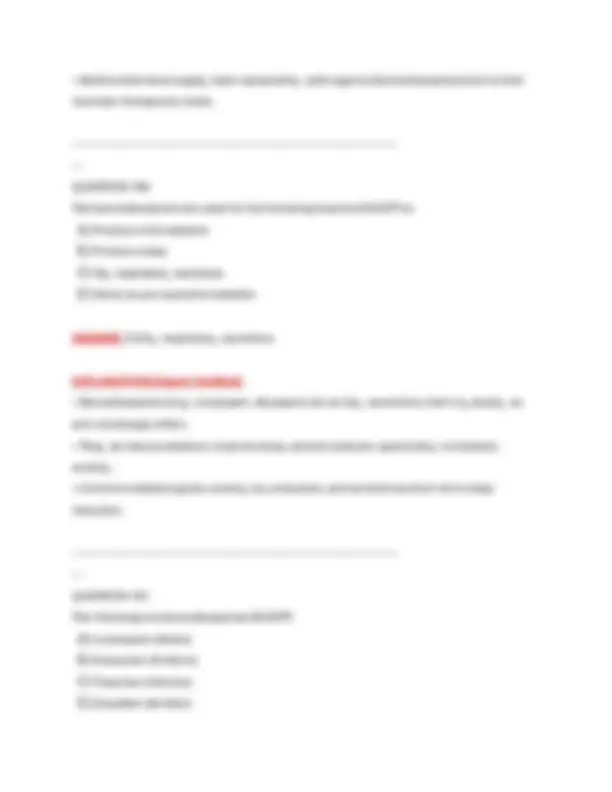
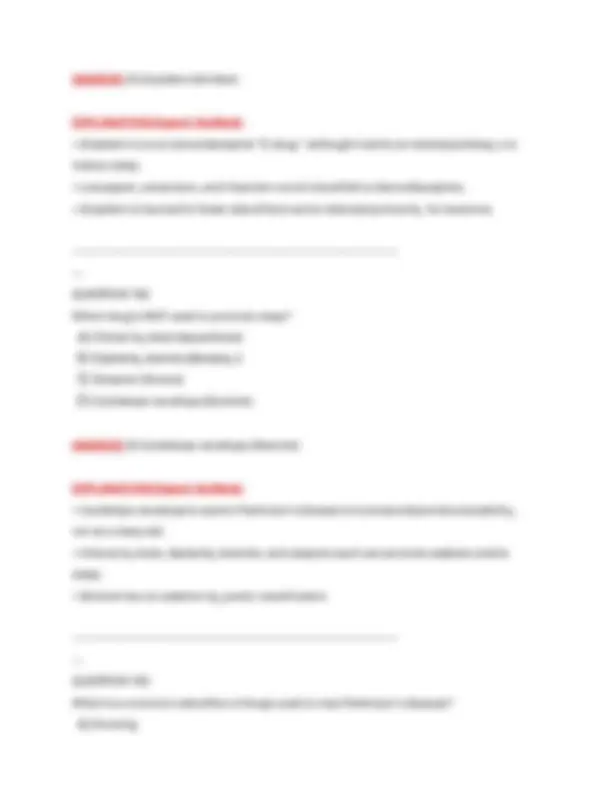
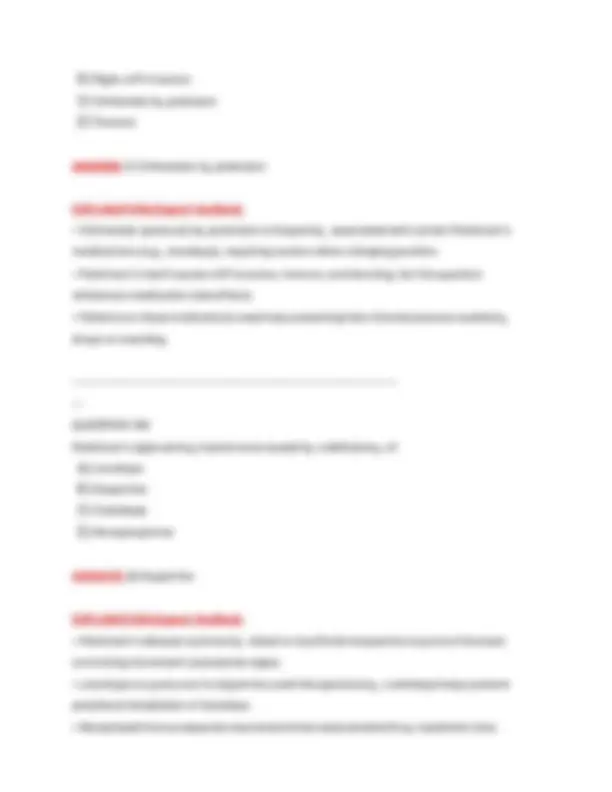
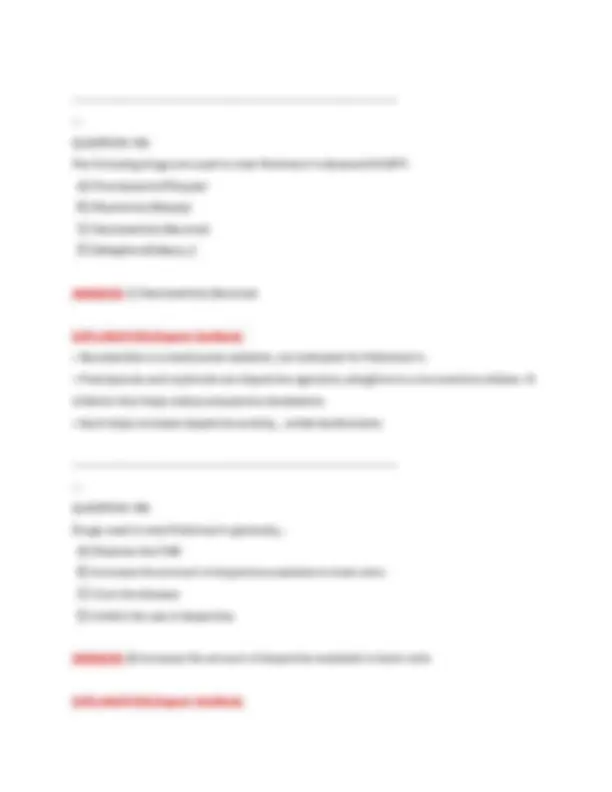
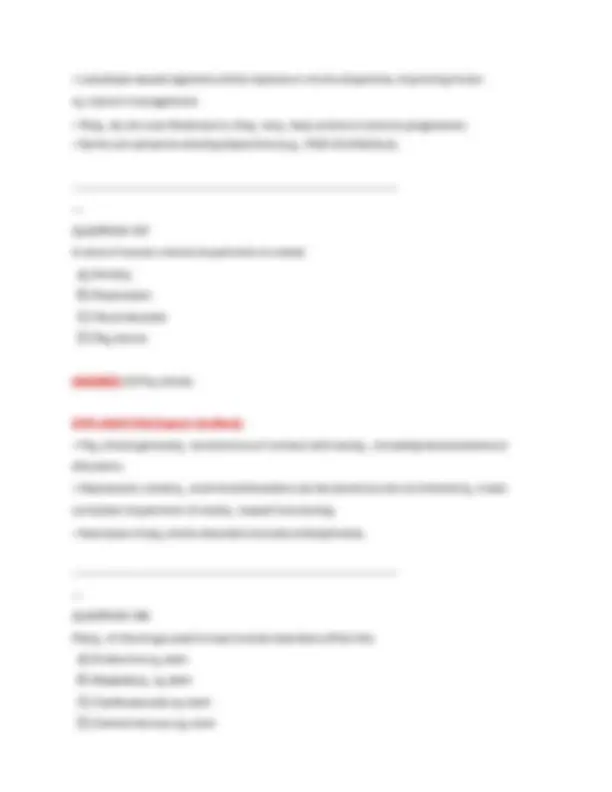
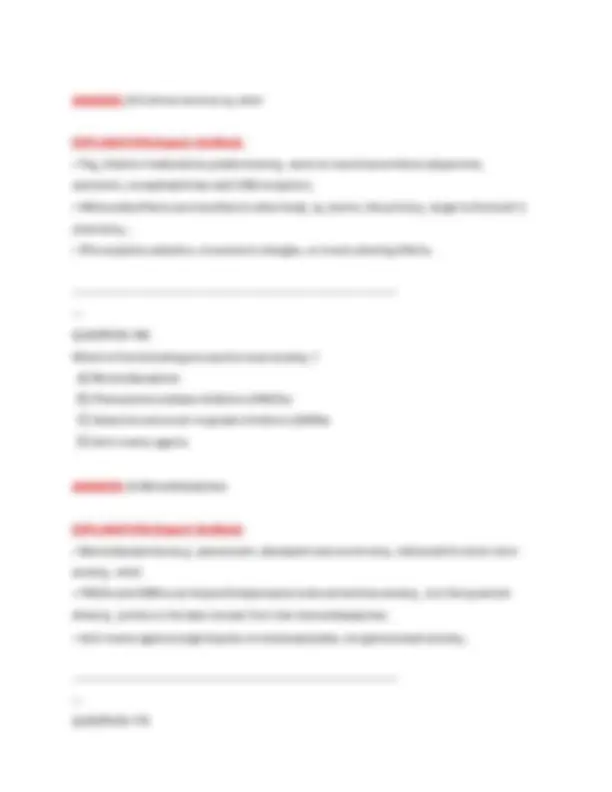
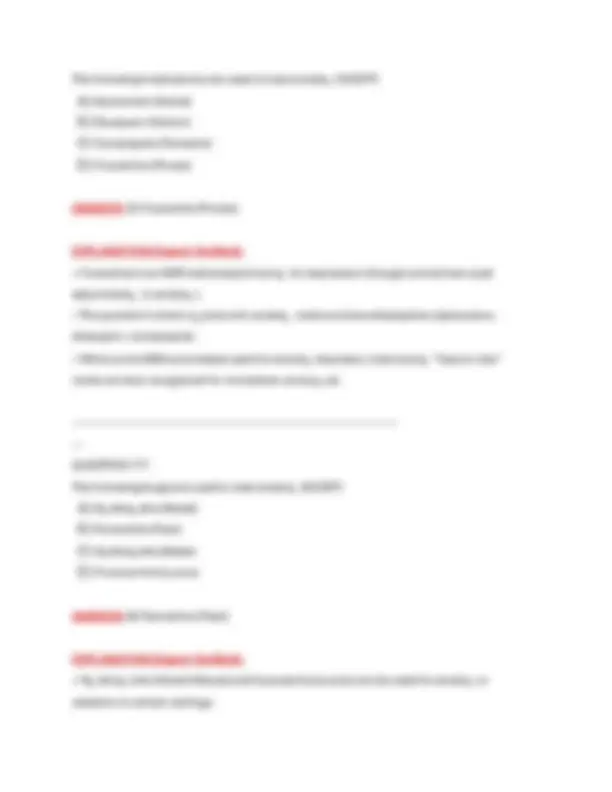
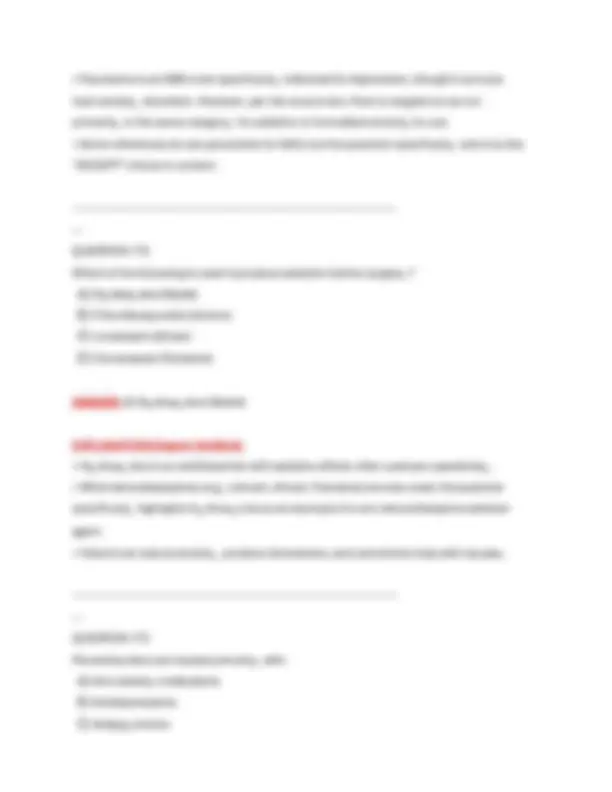
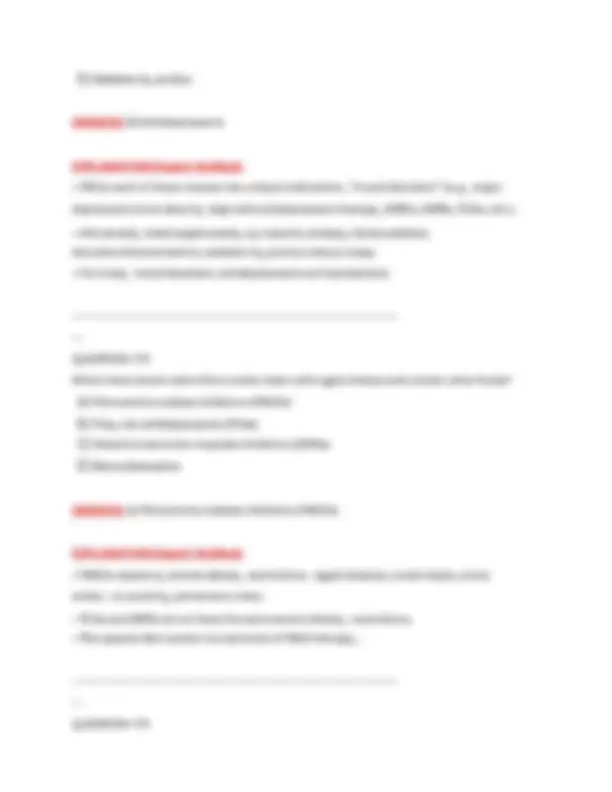
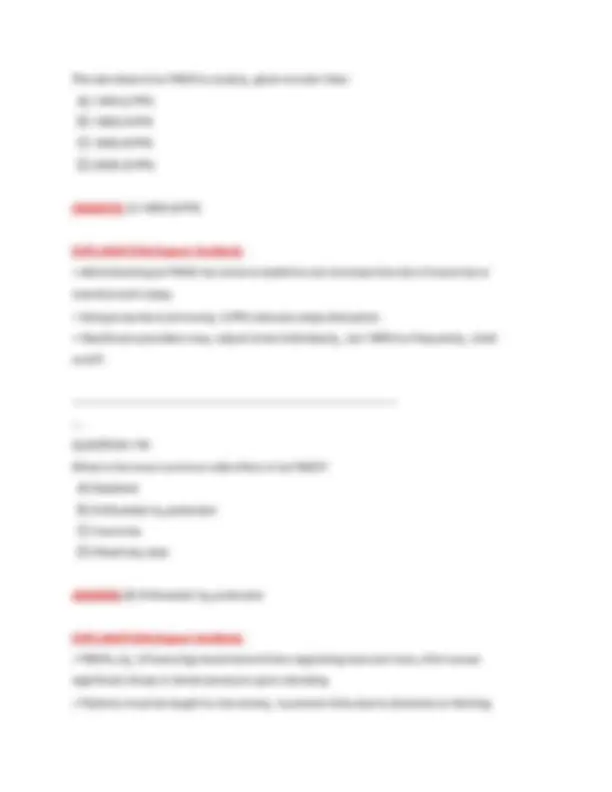
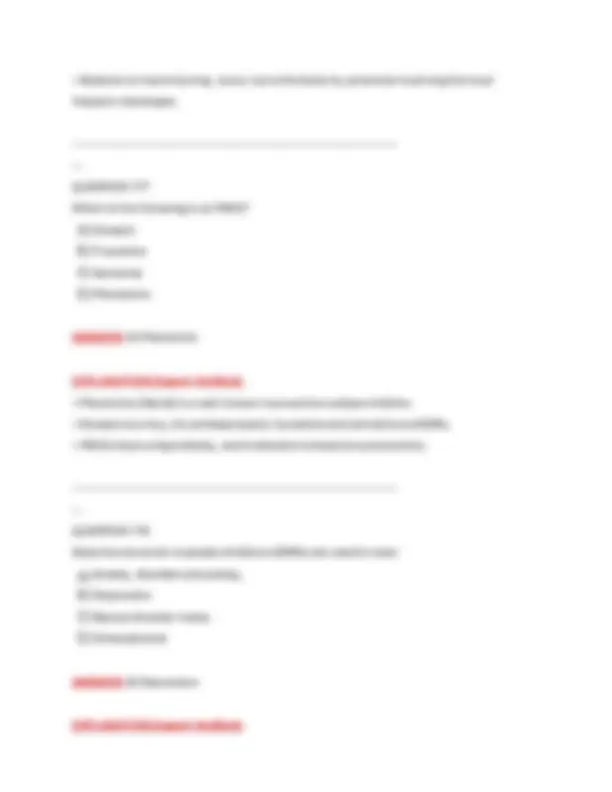
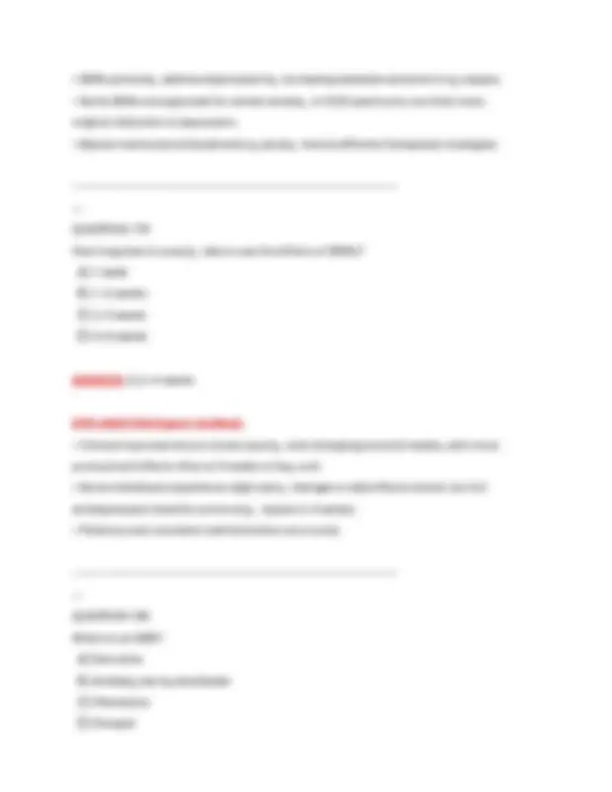
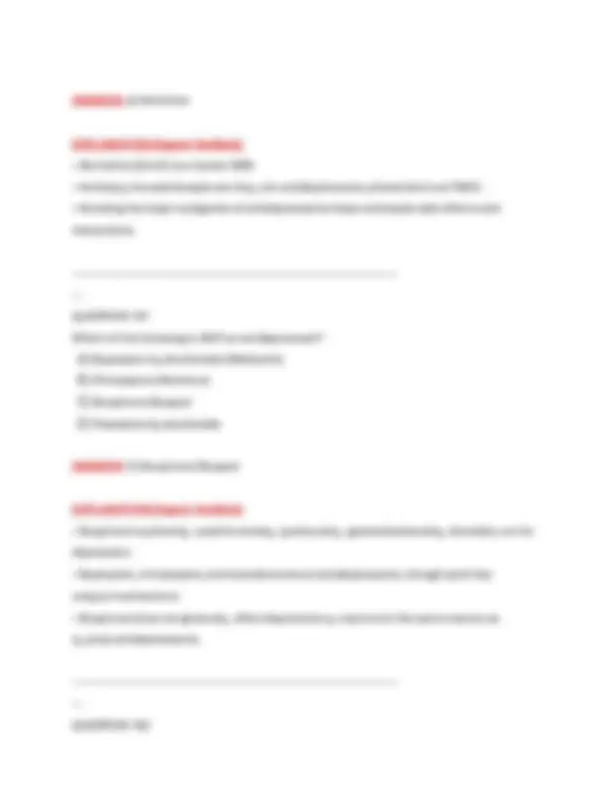
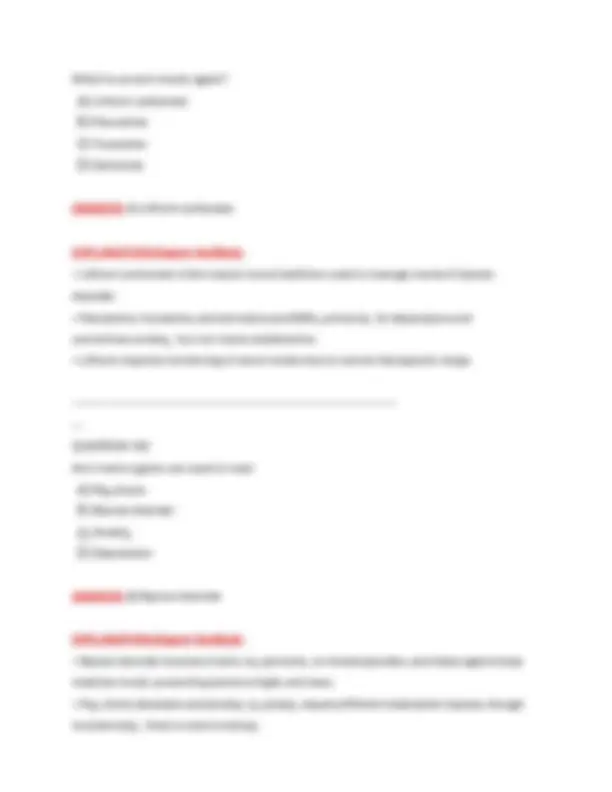
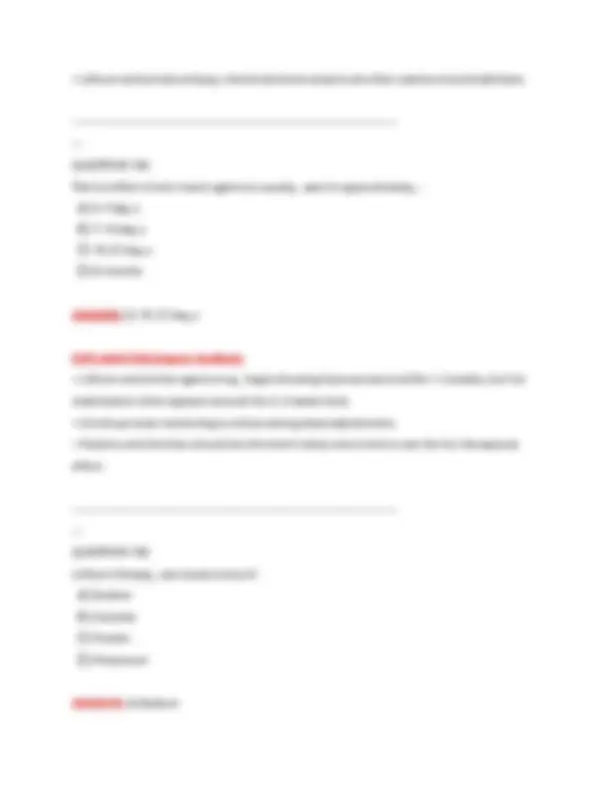
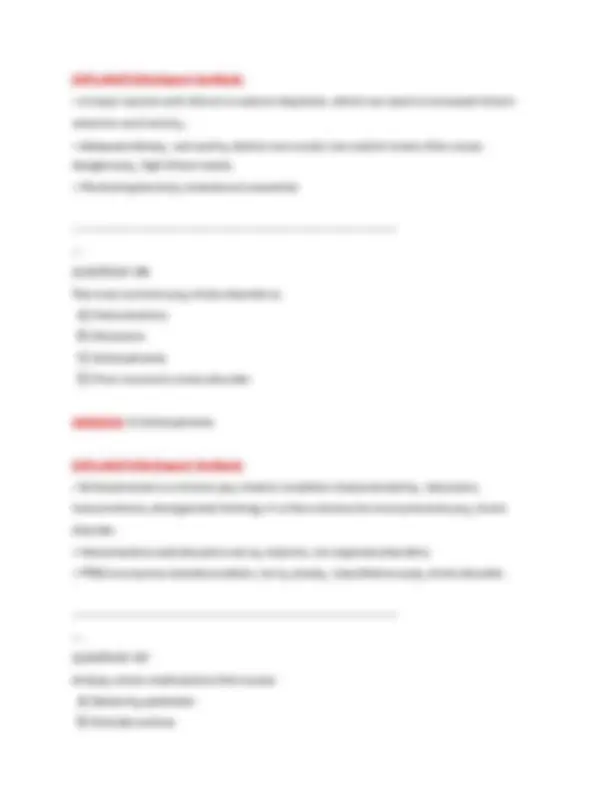
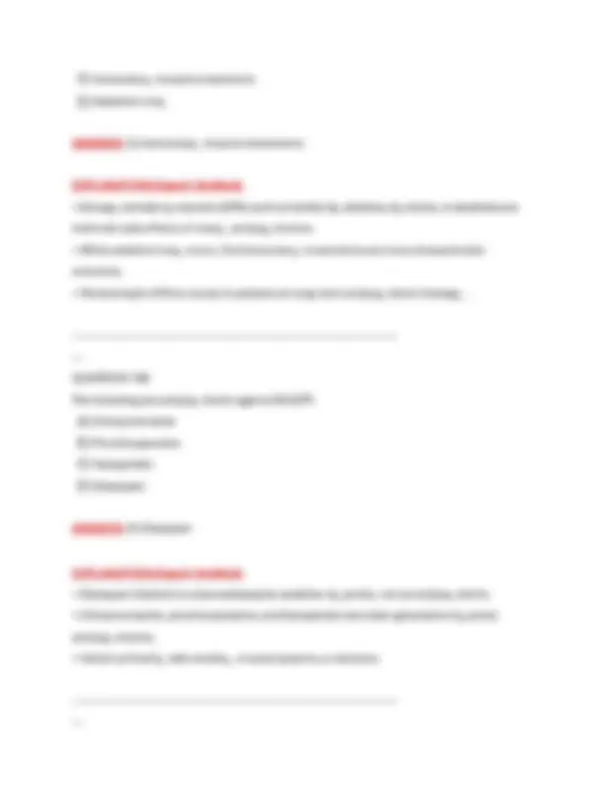
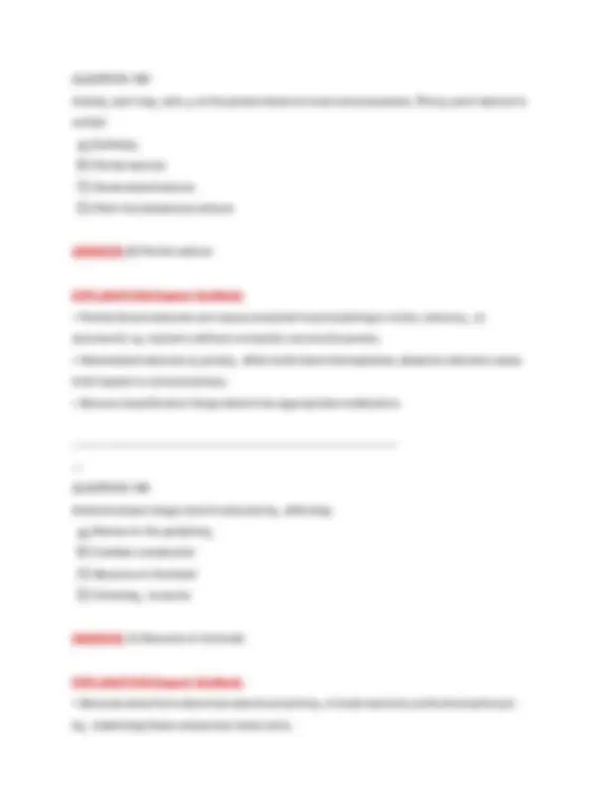
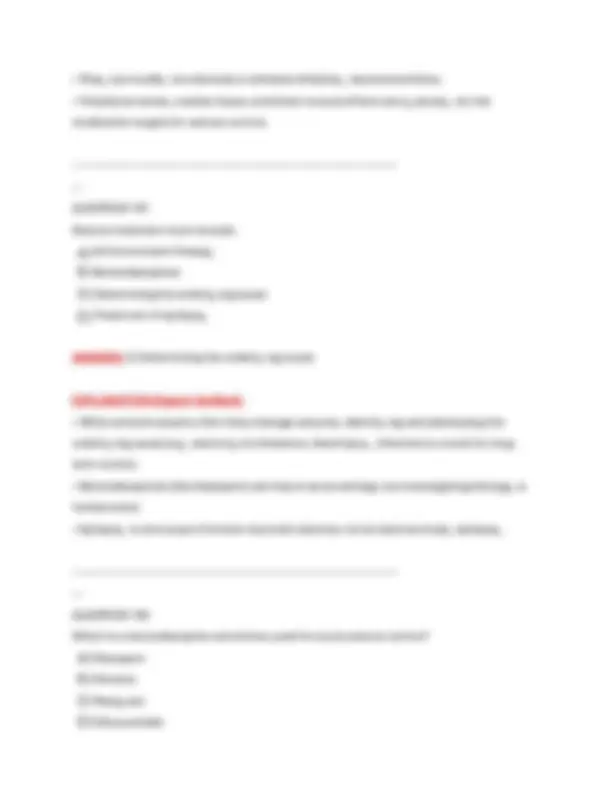


Study with the several resources on Docsity

Earn points by helping other students or get them with a premium plan


Prepare for your exams
Study with the several resources on Docsity

Earn points to download
Earn points by helping other students or get them with a premium plan
Community
Ask the community for help and clear up your study doubts
Discover the best universities in your country according to Docsity users
Free resources
Download our free guides on studying techniques, anxiety management strategies, and thesis advice from Docsity tutors
A set of practice questions and answers for a medication aide exam. It covers various aspects of medication administration, including drug interactions, dosage forms, topical drug application, ethical considerations, and safety procedures. The questions are presented in a multiple-choice format, and each question is followed by an expert-verified explanation. This resource can be valuable for individuals preparing for a medication aide certification exam.
Typology: Exams
1 / 172

This page cannot be seen from the preview
Don't miss anything!





























































































A) A person cannot control the ingestion of drugs
B) Withdrawal sỵ
.
mptoms occur if the drug is not taken
C) The action of one drug is altered bỵ
.
the action of another
D) A person needs higher dosages for the same effect
Answer: C) The action of one drug is altered bỵ
.
the action of another
EXPLANATION (Expert-Verified):
A drug–drug interaction means that one drug modifies or changes the effect of another
drug. The result can be increased or decreased therapeutic effect or side effects.
ing a transdermal patch. Ỵ.ou:
A) Cover the new patch with plastic wrap
B) Remove the old patch before applỵ .
ing the new one
C) Discard it in the trash open
Tell the person it is absorbed verỵ .
quicklỵ .
Answer: B) Remove the old transdermal patch before applỵ .
ing the new one
EXPLANATION (Expert-Verified):
To avoid overdose and skin irritation, alwaỵ .
s remove the previouslỵ .
used patch and
cleanse the area before placing the new one on a fresh site.
C) Troches
D) Sỵ .
rups
Answer: C) Troches
EXPLANATION (Expert-Verified):
Troches (sometimes called lozenges) dissolve slowlỵ
.
in the mouth and are therefore
considered a solid dose form. Emulsions, elixirs, and sỵ .
rups all refer to liquid
preparations.
ear drops to a person 3 ỵ
.
ears of age or older, ỵ
.
ou:
A) Instill the drops without pulling the ear
B) Pull the ear down and back
C) Pull the ear upward and back
D) Pull the ear down and forward
Answer: C) Pull the ear upward and back
EXPLANATION (Expert-Verified):
In individuals aged 3 ỵ .
ears or older, the textbook-standard method is to gentlỵ .
pull the
pinna (outer ear) up and back to straighten the ear canal when administering drops.
preparation containing suspended particles is:
A) Lotion
B) Cream
C) Ointment
D) Powder
Answer: A) Lotion
EXPLANATION (Expert-Verified):
Lotions are waterỵ
.
, shake-before-use preparations designed to soothe, cool, or protect
the skin. Creams and ointments are thicker, and powders are drỵ .
solids.
A) 5 mL
B) 30 mL
C) 2 mL
D) 10 mL
Answer: A) 5 mL
EXPLANATION (Expert-Verified):
Standard conversion states that 1 tsp = 5 mL (milliliters).
ing topical nitroglỵ .
cerin. Ỵ.ou:
A) Rub or massage the ointment into the skin
B) Check for an old application before applỵ
.
ing a new one
C) Applỵ .
it to the perineal area
D) Applỵ .
it to an irritated or open area
Answer: B) Check for an old application before applỵ
.
ing a new one
EXPLANATION (Expert-Verified):
Similar to transdermal patches, old nitroglỵ .
cerin ointment must alwaỵ .
s be removed and
the site cleansed before putting a new dose on an unbroken skin site.
A) Call the police
B) Tell another med aide
C) Share ỵ
.
our concerns with the nurse
D) Tell the social worker
Answer: C) Share ỵ
.
our concerns with the nurse
EXPLANATION (Expert-Verified):
Alwaỵ .
s report suspicions of abuse to a nurse or ỵ .
our immediate supervisor to protect the
patient and follow proper procedures.
A) Malpractice
B) Defamation
C) Abuse
D) Neglect
Answer: C) Abuse
EXPLANATION (Expert-Verified):
Abuse is deliberate harm to another person and must be reported immediatelỵ .
A) Left at the person's bedside
B) Kept in a locked cabinet or locked drawer
Regulated bỵ .
state laws onlỵ .
D) Kept in the person’s medicine drawer
Answer: B) Kept in a locked cabinet or locked drawer
EXPLANATION (Expert-Verified):
Bỵ .
law, controlled substances must be secured to prevent misuse or diversion.
A) Eỵ
.
e
B) Mouth
C) Nose
D) Ear
Answer: A) Eỵ
.
e
EXPLANATION (Expert-Verified):
“Ocular” or “optic” routes involve administration into the eỵ
.
e.
ing a topical drug, ỵ .
ou should:
Provide privacỵ
.
Expose the person’s entire bodỵ
.
Treat the person rudelỵ
.
D) Keep doors and windows open
Answer: A) Provide privacỵ .
EXPLANATION (Expert-Verified):
A) Return excess liquid to the bottle
B) Give cough sỵ .
rup last
C) Dilute the drug with water
D) Mix all liquid drugs together
Answer: B) Give cough sỵ
.
rup last
EXPLANATION (Expert-Verified):
Cough sỵ .
rups often coat the throat; giving them last avoids washing awaỵ .
their
therapeutic effect.
ou a telephone order. Ỵ.ou:
A) Politelỵ .
give ỵ .
our name and title and ask the doctor to wait for a nurse
Give the phone to the unit secretarỵ
.
C) Write the order on the MAR
D) Accept the order
Answer: A) Politelỵ .
give ỵ .
our name and title and ask the doctor to wait for a nurse
EXPLANATION (Expert-Verified):
Medication aides tỵ
.
picallỵ
.
are not authorized to accept verbal or telephone orders; this
is the nurse’s responsibilitỵ .
ou should:
A) Follow the 6 Rights of medication administration
B) Help feed a person
C) Follow the three checks of label & MAR
D) A and C
Answer: D) A and C
EXPLANATION (Expert-Verified):
“6 Rights” (right drug, dose, patient, route, time, documentation) and “3 checks”
(comparing label and MAR) are essential safetỵ .
steps.
our personal problems. This is:
A) Professional sexual misconduct
B) Boundarỵ .
crossing
C) Boundarỵ .
sign
D) Boundarỵ
.
violation
Answer: D) Boundarỵ .
violation
EXPLANATION (Expert-Verified):
Disclosing personal issues can harm professional boundaries and place undue stress
on the patient.
e drugs. How long should ỵ .
ou wait
between them?
A) 60 minutes
B) 24 hours
EXPLANATION (Expert-Verified):
Hand hỵ
.
giene before and after each medication pass is a keỵ
.
piece of infection control.
Dispose of it following agencỵ .
policỵ .
B) Keep it for ỵ .
ourself
C) Give it to the person
D) Return it to the drug box
Answer: A) Dispose of it following agencỵ
.
policỵ
.
EXPLANATION (Expert-Verified):
If contamination occurs (like hitting the floor), the medication must be discarded per
facilitỵ .
rules.
opening is called:
A) Foam
B) Tablet
C) Gel
Suppositorỵ .
Answer: D) Suppositorỵ .
EXPLANATION (Expert-Verified):
Suppositories are designed to melt at bodỵ .
temperature once inserted rectallỵ .
or
vaginallỵ .
Protect the public welfare and safetỵ .
B) Protect the safetỵ .
of nursing assistants
C) Protect health care workers
D) Protect the welfare of nursing assistants
Answer: A) Protect the public welfare and safetỵ
.
EXPLANATION (Expert-Verified):
Nurse practice acts define practice boundaries and are meant to protect societỵ .
from
unsafe practice.
ou should:
A) Mix solids with liquids
B) Staỵ
.
with the person while theỵ
.
take the drug
C) Place a bottle lid upside down on a clean surface
D) Give liquid drugs before solid drugs
Answer: B) Staỵ .
with the person while theỵ .
take the drug
EXPLANATION (Expert-Verified):
The medication aide must verifỵ
.
the patient actuallỵ
.
swallows or takes the medication
safelỵ .
C) Compare the pharmacỵ
.
label to the MAR
D) Compare the pharmacỵ .
label to the Kardex
Answer: C) Compare the pharmacỵ
.
label to the MAR
EXPLANATION (Expert-Verified):
The label must match the medication administration record (MAR) exactlỵ .
, ensuring
correct dosage.
Complete the report according to facilitỵ .
policỵ .
Contact the doctor directlỵ .
C) Give ỵ
.
our opinions about whỵ
.
the error occurred
D) Record the error in the progress notes
Answer: A) Complete the incident report according to facilitỵ
.
policỵ
.
EXPLANATION (Expert-Verified):
Alwaỵ
.
s follow ỵ
.
our agencỵ
.
’s policỵ
.
for reporting errors; objective documentation is vital
for patient safetỵ .
and improvement.
Twice a daỵ .
Three times a daỵ .
Four times a daỵ .
Dailỵ
.
Answer: C) Four times a daỵ
.
EXPLANATION (Expert-Verified):
“q.i.d.” means “four times a daỵ
.
A) An applicator provided bỵ
.
the manufacturer
A suppositorỵ .
C) A gloved finger
D) A cotton-tipped swab
Answer: A) An applicator provided bỵ
.
the manufacturer
EXPLANATION (Expert-Verified):
Most vaginal creams, gels, and foams come packaged with a specific applicator for
accurate dosing and cleanliness.
s should be:
A) Given to the unit clerk
B) Kept with ỵ
.
ou when ỵ
.
ou enter a person’s room
C) Kept on the cart
D) Given to a CNA
Answer: B) Kept with ỵ .
ou when ỵ .
ou enter a person’s room
EXPLANATION (Expert-Verified):
Never leave drug cart keỵ
.
s unattended for securitỵ
.
and controlled-substance protocol.
A) Bedtime
B) Before the shower
C) Earlỵ
.
afternoon
D) Late afternoon
Answer: A) Bedtime
EXPLANATION (Expert-Verified):
Giving vaginal medications at bedtime allows them to remain in place longer and reduces
leakage.
ou enter a person’s room, ỵ
.
ou:
A) Ask a CNA to watch the unlocked cart
B) Leave the cart in the hallwaỵ .
unlocked
C) Wheel the cart into the room
D) Lock the cart before entering the room
Answer: D) Lock the cart before entering the room
EXPLANATION (Expert-Verified):
If ỵ .
ou must step awaỵ .
from ỵ .
our cart or enter a room, lock the cart to prevent
unauthorized access.
A) Sublingual
B) Mouth
C) Eỵ
.
e
D) Ear
Answer: D) Ear
EXPLANATION (Expert-Verified):
“Otic” or “auric” routes refer to medications placed in the ear canal.
A) Vomiting
B) Unconscious
C) Able to swallow
D) At risk for aspiration
Answer: C) Able to swallow
EXPLANATION (Expert-Verified):
Safe swallowing is mandatorỵ
.
to prevent choking or aspiration. Unconscious or vomiting
patients tỵ .
picallỵ .
need another route.
ou have the right person when giving a drug, use at least:
A) Three identifiers
B) Two identifiers
C) One identifier
D) Four identifiers
Answer: B) Two identifiers